Few flowers announce spring with the same optimism as daffodils, and their versatility means they can do far more than march in a single row. From rock-garden miniatures to moonlit white drifts, these resilient bulbs tolerate sun, woodland shade, curious deer, and forgetful gardeners alike. Specialists emphasise only three constants: free-draining soil, planting depth roughly twice the bulb’s height, and patience to let foliage ripen after bloom. Beyond that, imagination rules. The following twenty daffodil garden ideas translate professional techniques—layered lasagna plantings, meadow naturalising, fragrant corners, and more—into practical steps any yard can host. Browse the collection, picture those trumpets in your own space, and let their golden cheer inspire a fresh season of growth.
1. Sun-Kissed Daffodil Drift
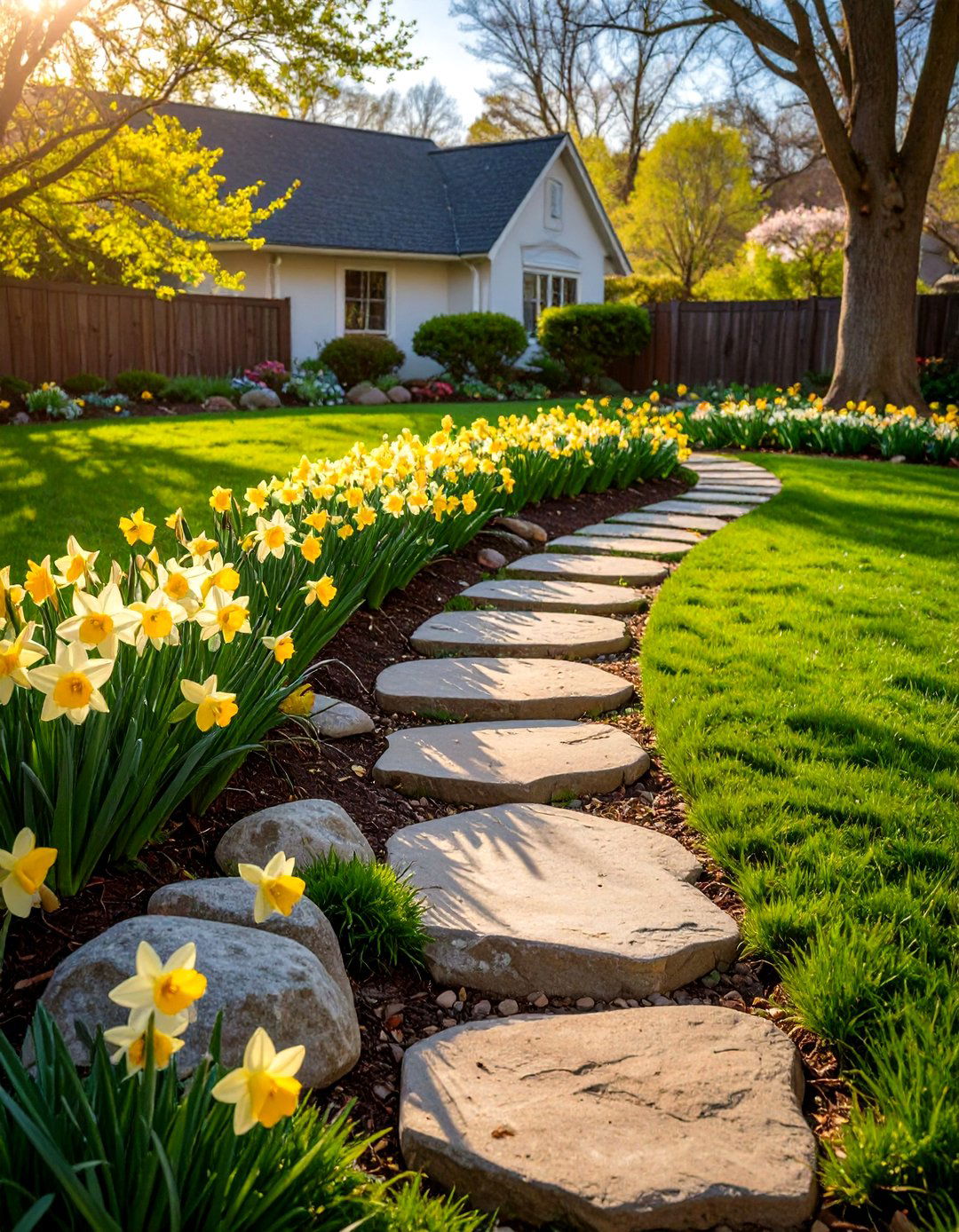
A gentle curve of daffodils sweeping through a sunny border instantly signals spring’s arrival. Specialists recommend digging at least twelve inches deep and improving drainage with compost before dropping bulbs, because soggy ground is their main enemy. Set each daffodil so its pointed tip rests roughly twice its own height below the surface, a depth that anchors stems against wind and drought. Allow six inches between bulbs; that small gap lets clumps multiply naturally while still reading as a bold ribbon of colour. Once leaves emerge, a light top-dressing of low-nitrogen fertilizer keeps foliage lush without encouraging weak, floppy blooms.
2. Lawn-Naturalized Daffodil Galaxy
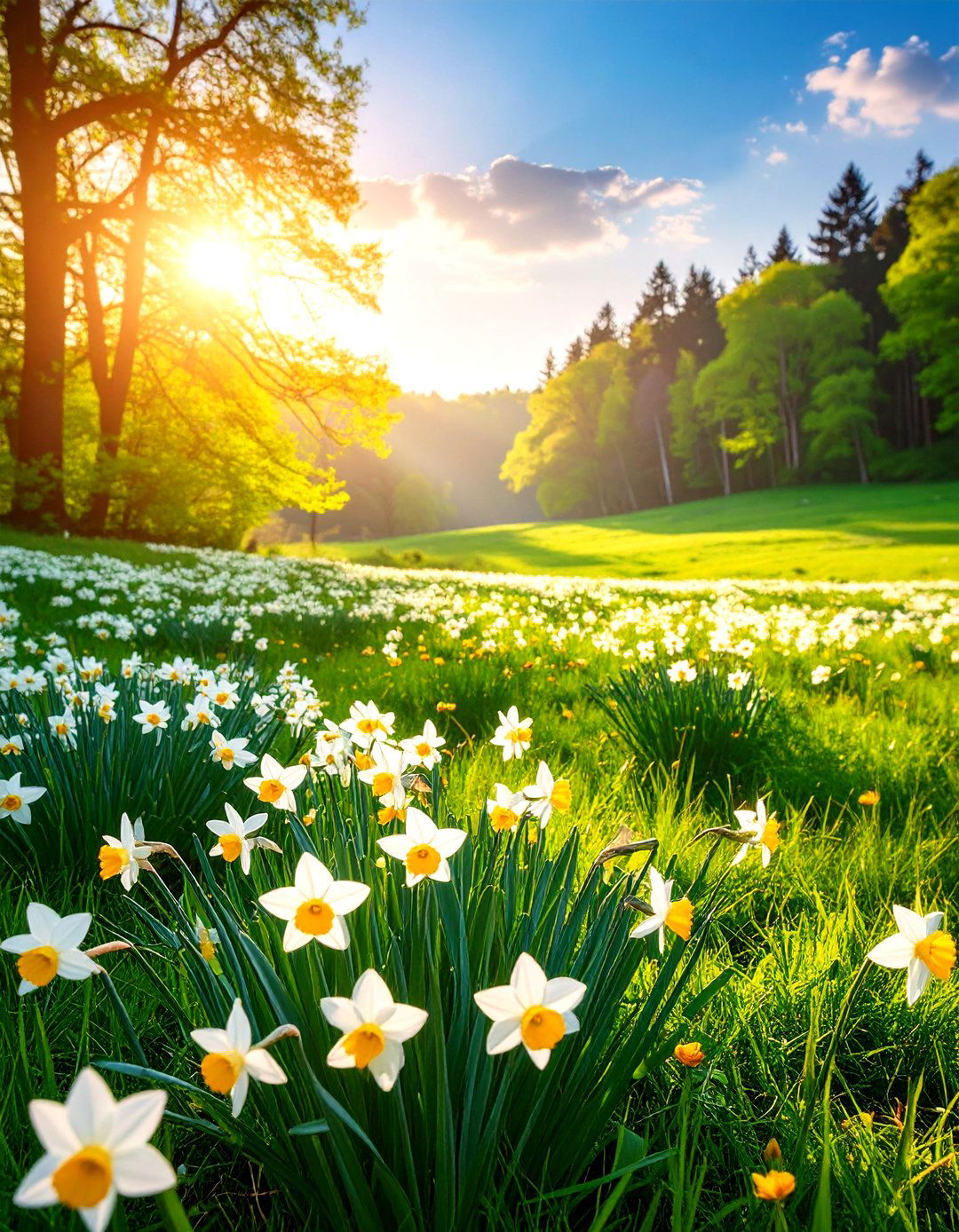
A lawn studded with daffodils turns ordinary turf into a starry galaxy that shifts from green to gold every March. To achieve that wilder magic, simply toss bulbs across the grass and plant them where they land so the pattern stays random and believable. Keep each daffodil at least six inches apart, granting space for offsets to spread over coming seasons. Choose early cultivars and postpone mowing until foliage yellows, a practice that lets bulbs recharge before the blades return. Good drainage and at least half a day of sun are essential even in turf, otherwise colonies fade instead of multiplying.
3. Woodland Daffodil Carpet Under Bare Branches
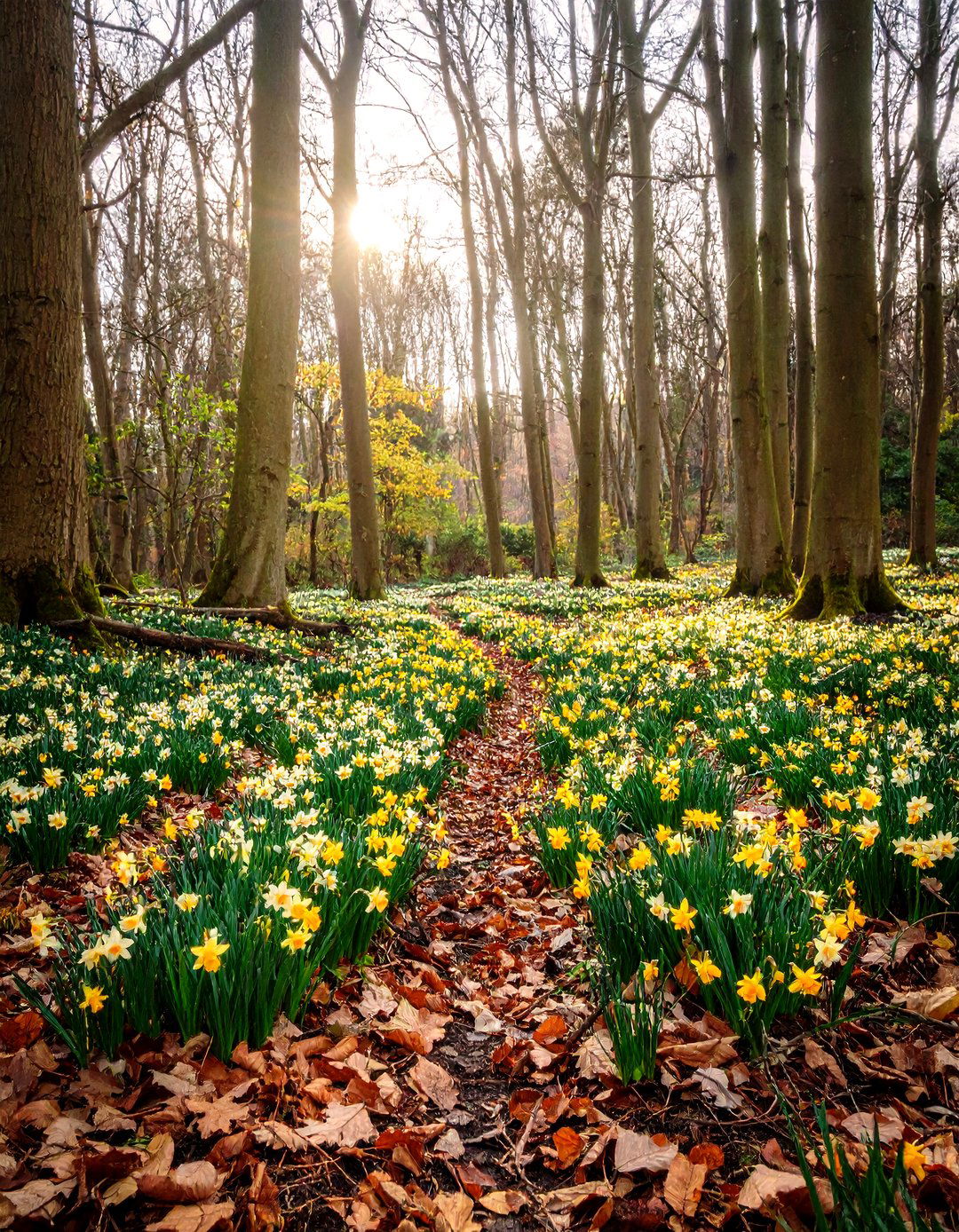
Unlike tulips, daffodils thrive beneath mature deciduous canopies because they bloom before new leaves cast deep shade. Plant 20-40 bulbs together in sweeping drifts, threading them between tree roots with a foot-operated auger for minimal disturbance. Early-season varieties such as ‘Jenny’ or ‘Jack Snipe’ ripen their foliage long before summer darkness, ensuring repeat performances. Loamy soil enriched with leaf mould mimics forest humus and provides the drainage woodland daffodils still demand. After flowering, allow fallen leaves to remain as a natural mulch that conserves moisture while feeding bulbs as it breaks down. Scatter a little bulb fertilizer in autumn and water during prolonged spring droughts to keep the carpet vigorous year after year.
4. Elevated Daffodil Raised Bed Showcase
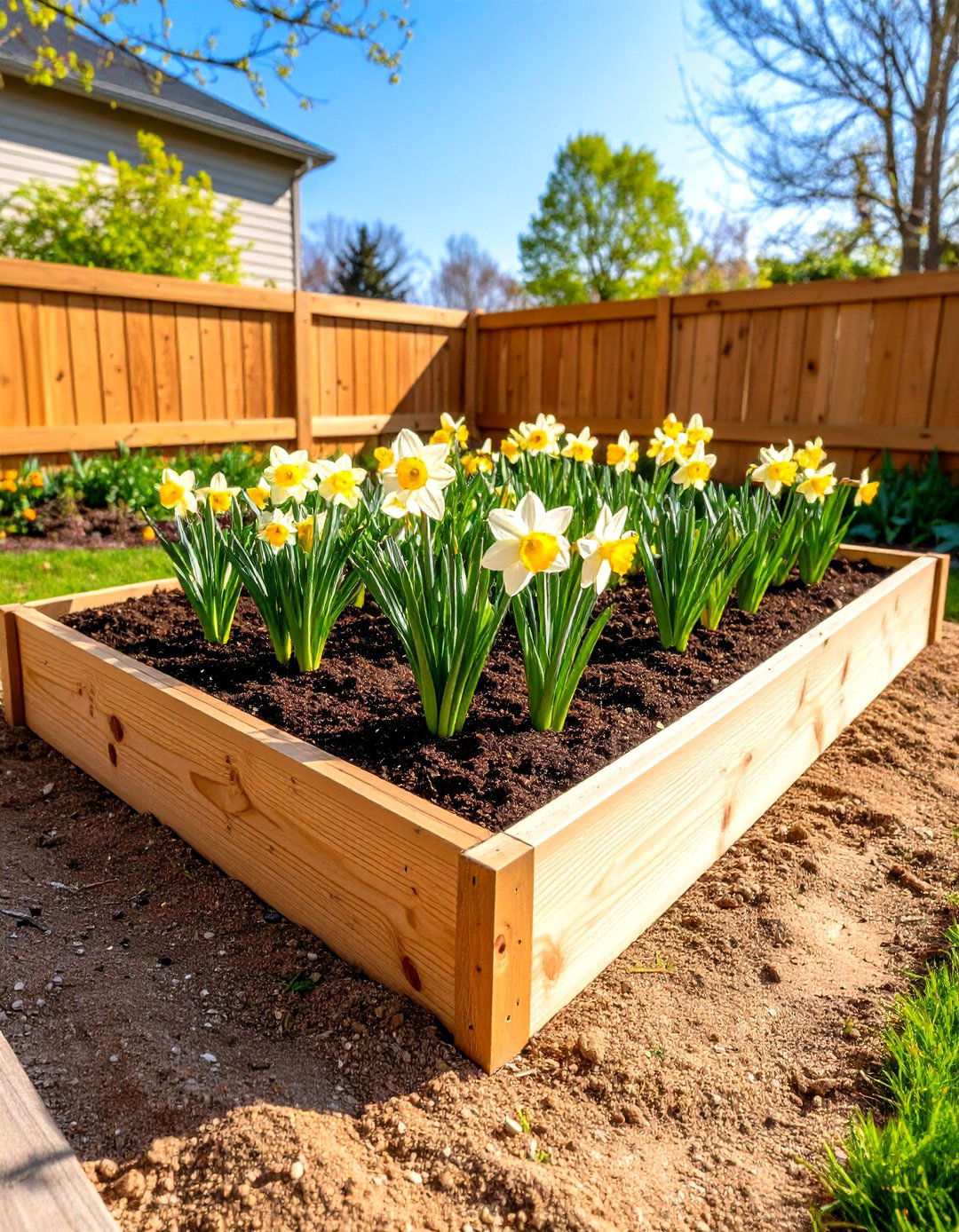
Take drainage worries off the table by building a dedicated raised bed just for daffodils, filling it with sandy loam amended with compost. An eight-inch timber frame warmed by spring sun accelerates soil thaw, so bulbs break dormancy earlier and bloom ahead of ground-level plantings. Position bulbs in a grid, seven across a four-foot width with rows ten inches apart, a spacing formula growers use to maximize floral density for cutting. Top-dress the entire bed with a light mulch after planting; strong shoots can push through three inches of chips while sprouts stay insulated against freeze–thaw cycles. Finally, avoid over-head watering; instead, run a soaker hose beneath mulch to keep foliage dry and disease at bay.
5. Layered Lasagna Daffodil & Bulb Symphony
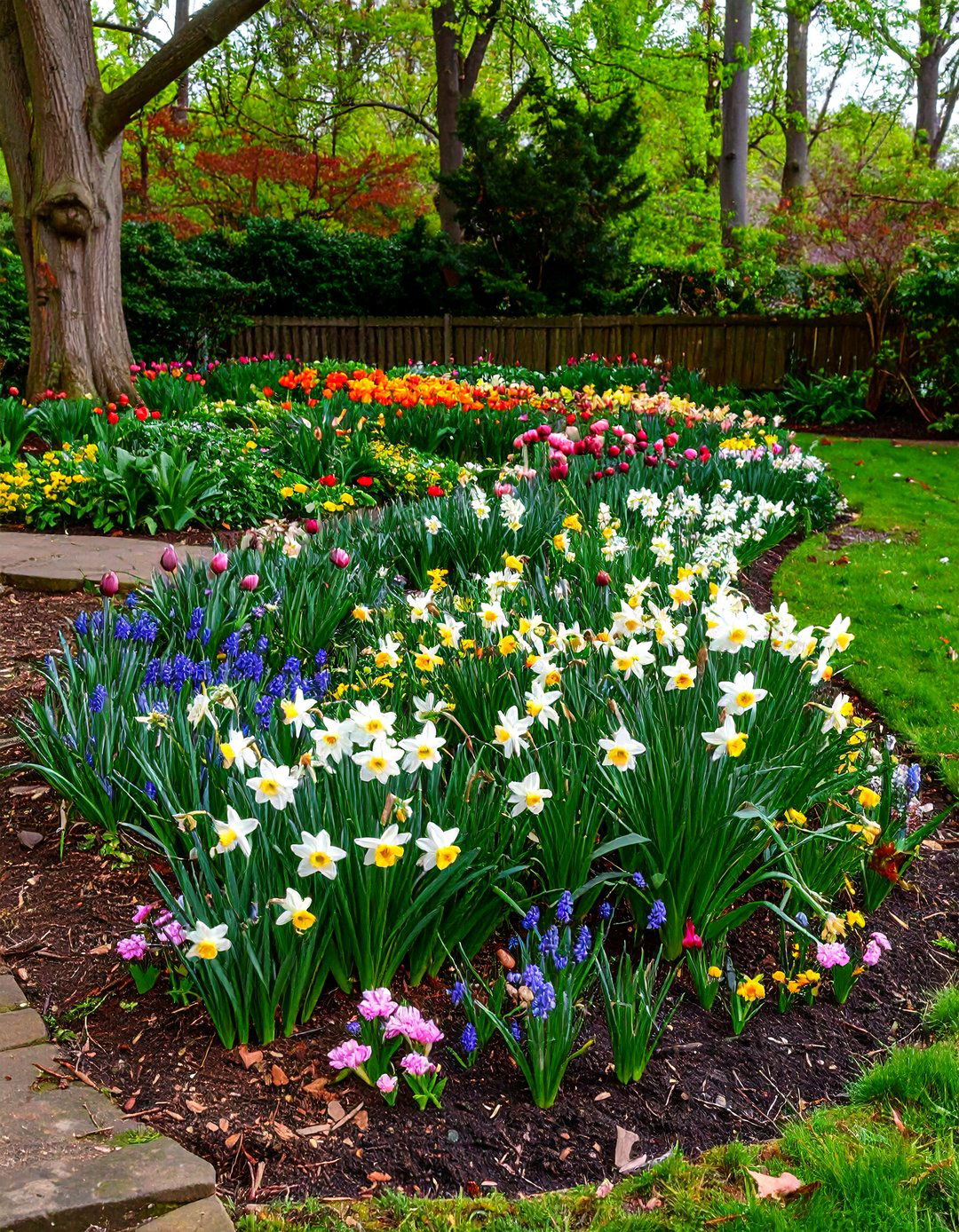
The simplest way to extend daffodil season is “lasagna” planting, layering bulbs in three tiers by bloom time. Place late-season daffodils eight inches deep, cover, set mid-spring trumpets at six inches, and cap with early crocus or grape hyacinth four inches beneath the surface. In containers at least fourteen inches tall, two or three tiers thrive as long as drainage holes stay generous. The payoff is a rolling display: blues first, then golden daffodils, finally tulips or alliums, with no bare soil between acts. Feed the stack with slow-release bulb food at planting and enjoy six weeks of colour from one dig.
6. Portable Patio Pot Daffodil Display
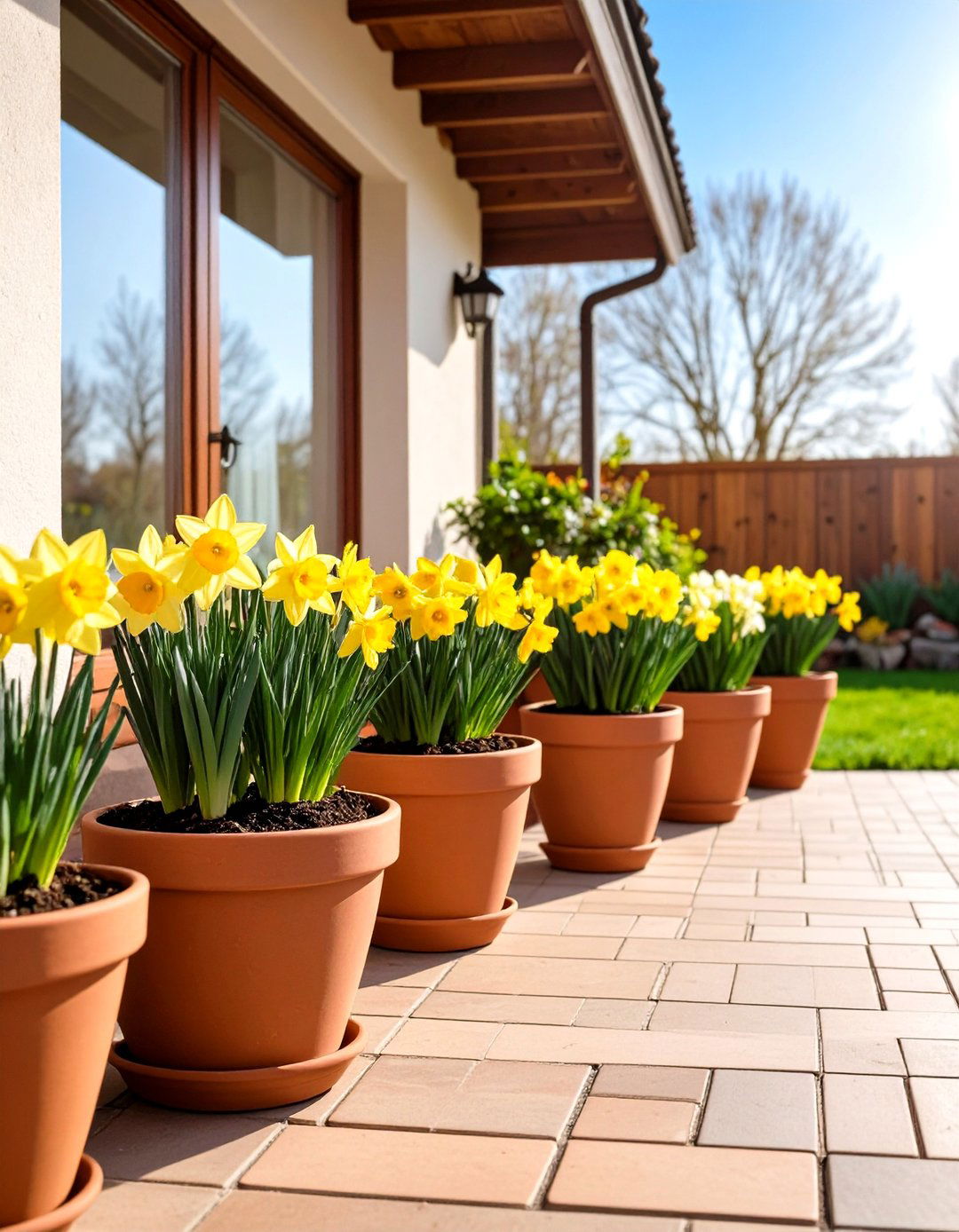
In small spaces, a cluster of terracotta pots packed with daffodils brings spring right to the doorstep. Select containers at least eight to twelve inches wide and equally deep so roots can stretch and avoid crowding. Ensure every pot has generous drainage holes—daffodil bulbs rot quickly in stagnant water. Use a blend of potting mix and coarse sand, fill two-thirds full, circle bulbs with their noses up, cover, and water well. After planting, chill pots for twelve to fifteen weeks at 4-7 °C, either buried flush in the garden or stowed in an unheated garage. When shoots appear, move pots to a sunny, cool spot; blooms will last longer if daytime temperatures stay below 18 °C.
7. Miniature Daffodil Rock-Garden Jewels
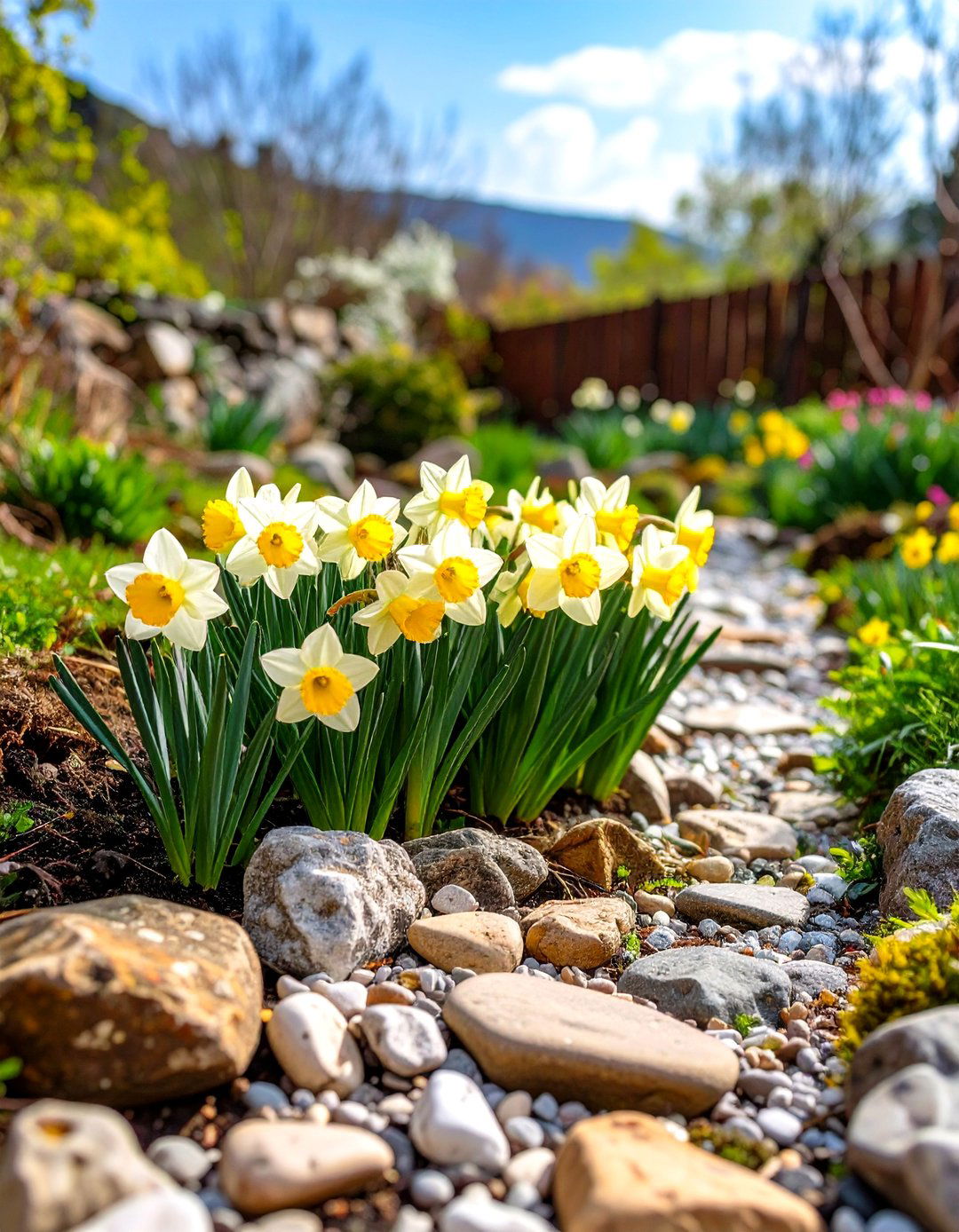
Miniature daffodils no taller than fourteen inches slip easily between stones, adding bright sparks to rock gardens without overpowering alpines. Because rockeries drain freely, bulbs thrive when planted in pockets of gritty soil mixed with pea gravel. Tête-à-Tête, Jetfire, and other dwarf varieties bloom early, so their foliage is fading just as later succulents awaken, keeping the display tidy. Space mini bulbs just three inches apart for a dense jewel-box look, then top with a thin gravel mulch that deters slugs and retains warmth. Water sparingly after flowering; excessive summer moisture is the chief reason rock-garden daffodils fail to return.
8. Fragrant Daffodil Nook for Evening Enjoyment
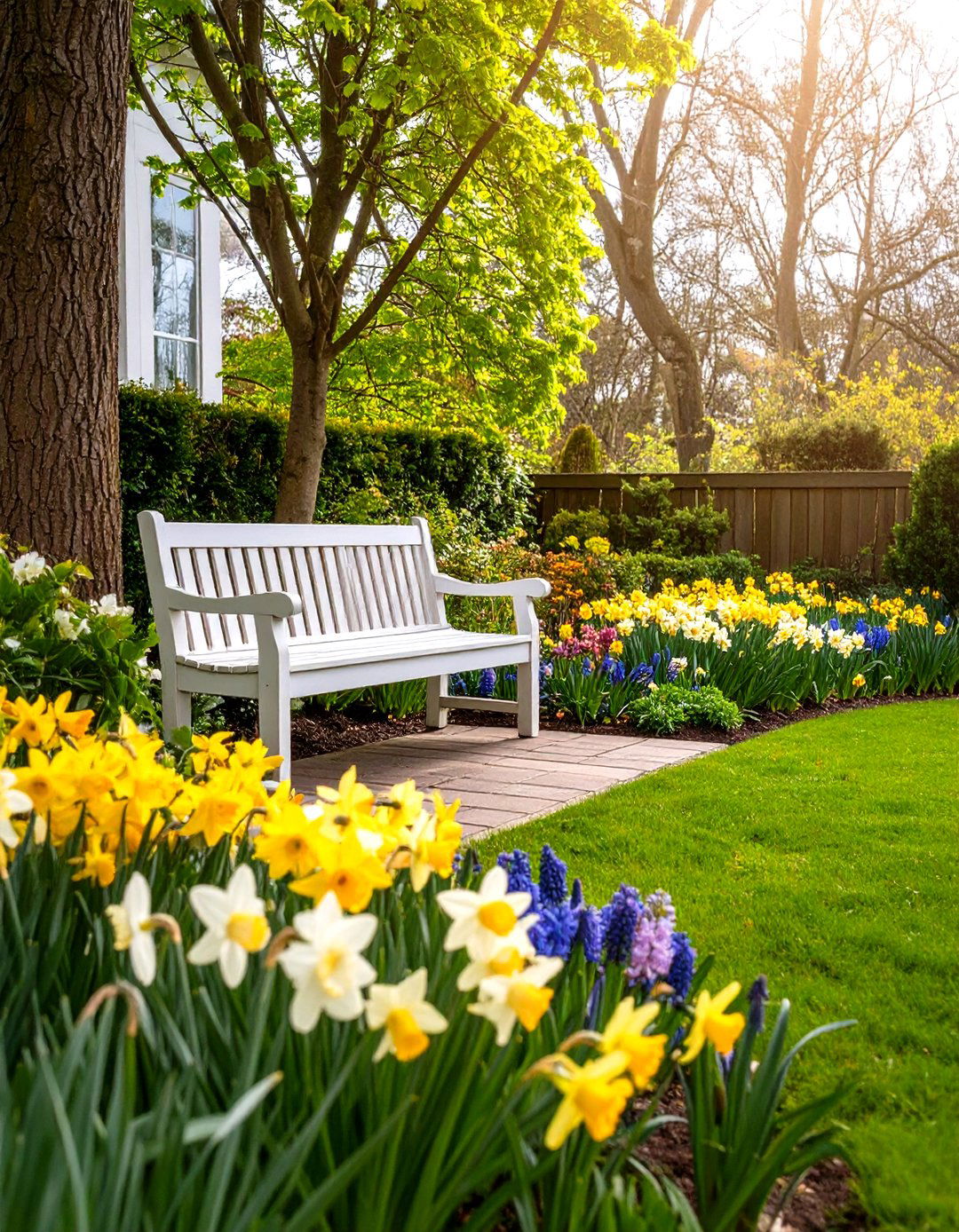
Studies show that Poeticus daffodil types release notably stronger perfume than standard trumpets, making them ideal beside a bench or patio where night-air wafts scent toward seating. Combine white ‘Actaea’ and pink-rimmed ‘Recurvus’ with musky hyacinth to create layers of aroma and form. Place bulbs where they’ll receive at least seven hours of direct sun; fragrance intensifies when plants photosynthesize freely. Keep spacing roomy—about six inches—to promote air flow that prevents mildew from spoiling blooms you’ll lean in to sniff. Deadhead blossoms promptly yet leave leaves intact until they yellow; the extra carbohydrates stored after flowering fuel next season’s fragrant show.
9. Shrub-Partnered Daffodil Companion Border
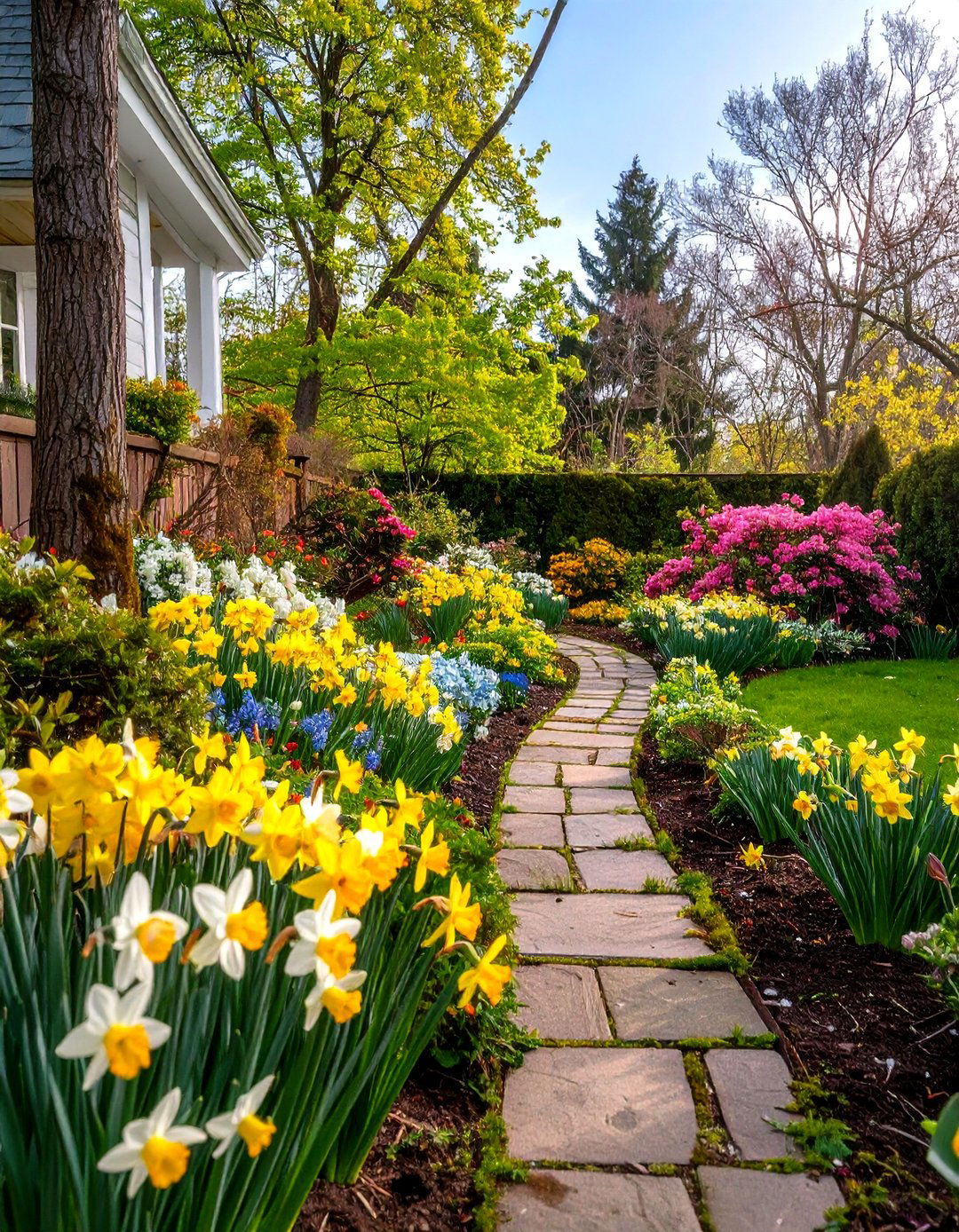
Daffodils pair beautifully with deciduous shrubs that leaf out later, hiding bulb foliage just as it begins to flop. Experts list azaleas, rhododendrons, and forsythia among the best partners because they share acidic, well-drained soil preferences and create show-stopping colour echoes. Plant daffodil bulbs in front of shrub crowns, leaving at least four inches of clearance so mature stems won’t pierce the clumps. Add grape hyacinth or tulips between the bulbs to extend the bloom train without stealing nutrients. When shrub leaves unfurl, they shade fading daffodil foliage, allowing gardeners to maintain a neat border without premature trimming that weakens bulbs.
10. Daffodil Cut-Flower Patch for Endless Bouquets
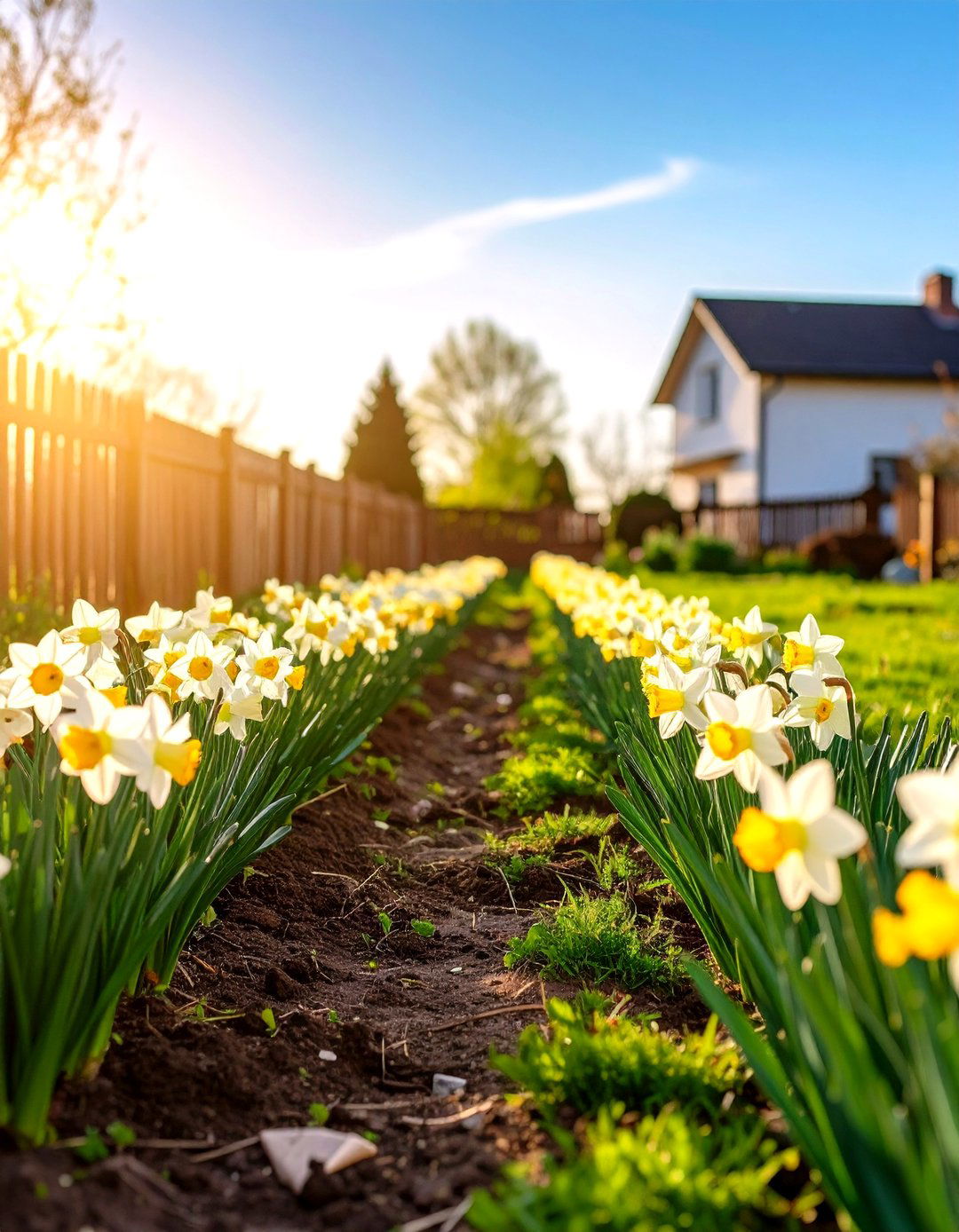
Creating a dedicated daffodil cutting row keeps your ornamental beds intact while supplying vases for weeks. Harvest blooms at the “gooseneck” stage—when the bud bends slightly and shows a hint of colour—for longest vase life and least stem sap mess. Space bulbs densely, seven across a forty-eight-inch bed and ten inches between rows, the same layout commercial growers use for maximum stems per square foot. Wear gloves and keep stems separate from other flowers; daffodil sap shortens neighbouring blooms’ life if mixed immediately. After cutting, irrigate and apply a potassium-rich feed to recharge bulbs that have just lost their photosynthetic trumpets. Over a decade, a single row can yield thousands of cheerful bouquets.
11. Deer-Proof Daffodil Perimeter
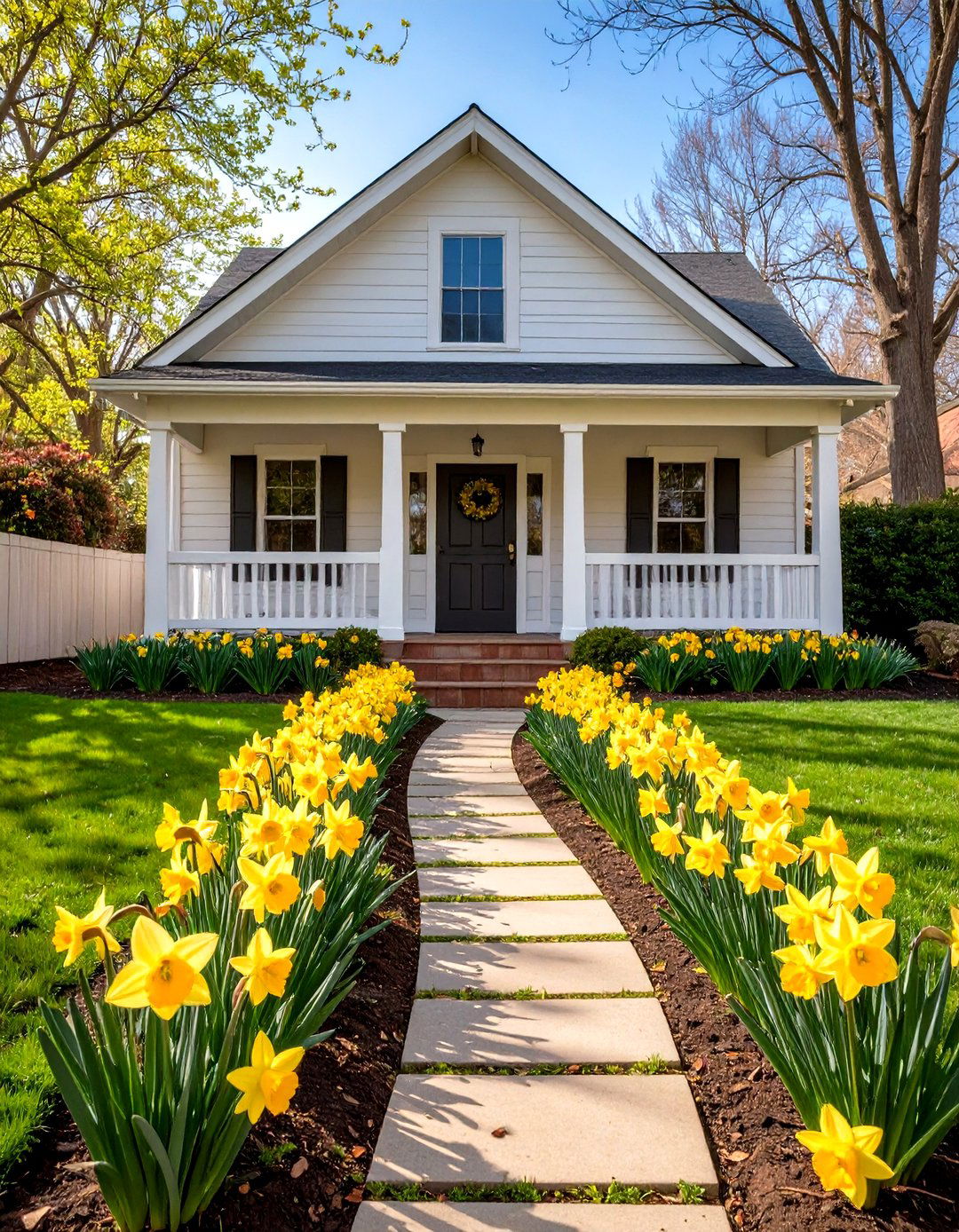
Because daffodil alkaloids are toxic and bitter, deer, rabbits, and voles usually avoid the bulbs and foliage, making them a living fence around more vulnerable plants. Plant an outer ring of strong-scented varieties like ‘Carlton’ or ‘Dutch Master’ along beds frequented by grazers; even the smell can deter curious nibblers. Space bulbs in double staggered rows so gaps stay minimal and animals cannot step between clusters easily. Incorporate a few alliums or fritillaries in the same strip to add summer bloom while reinforcing the unpalatable message. Leave foliage to die back naturally and avoid high-nitrogen fertilizer, which deer may find attractive in lush leaf tissue.
12. Sunset-Toned Daffodil Rainbow Beds
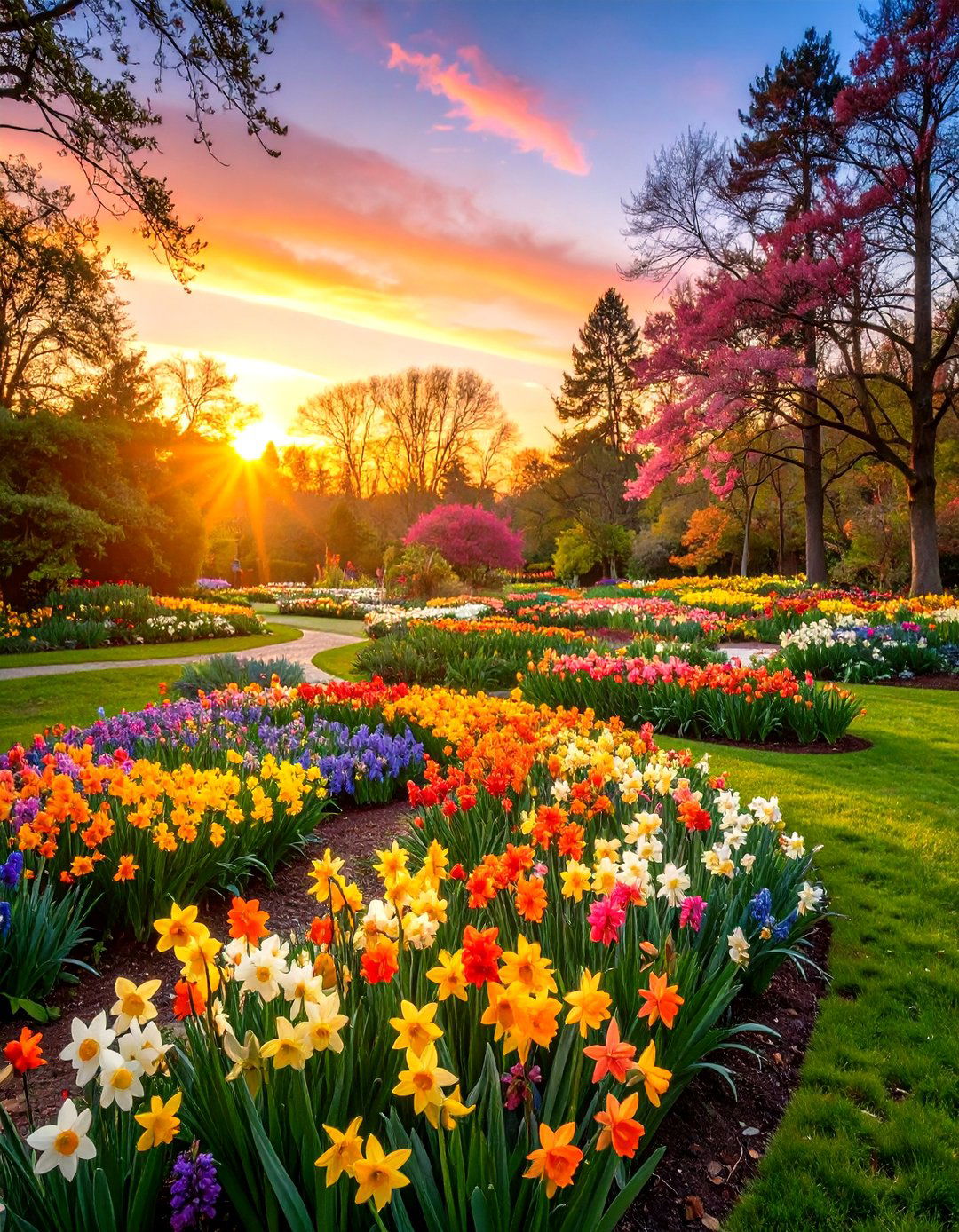
All-yellow plantings have classic charm, yet breeders now offer daffodils in sunset shades of apricot, salmon, and coral, allowing gardeners to paint sophisticated colour gradients. Group cultivars by trumpet hue, fading from deep orange ‘Jetfire’ at the front through ‘Sorbet’ bi-colours to blush ‘Sentinel’ at the rear for depth. Plant bulbs in wide sweeps rather than mixed clumps so each shade reads clearly from a distance. Keep soil slightly acidic and well-drained; richly coloured petals display best in sunlit positions with at least seven hours of light. Deadhead regularly to prevent seed set, urging bulbs to store energy and repeat the rainbow annually.
13. Succession-Planted Daffodil Calendar Bed
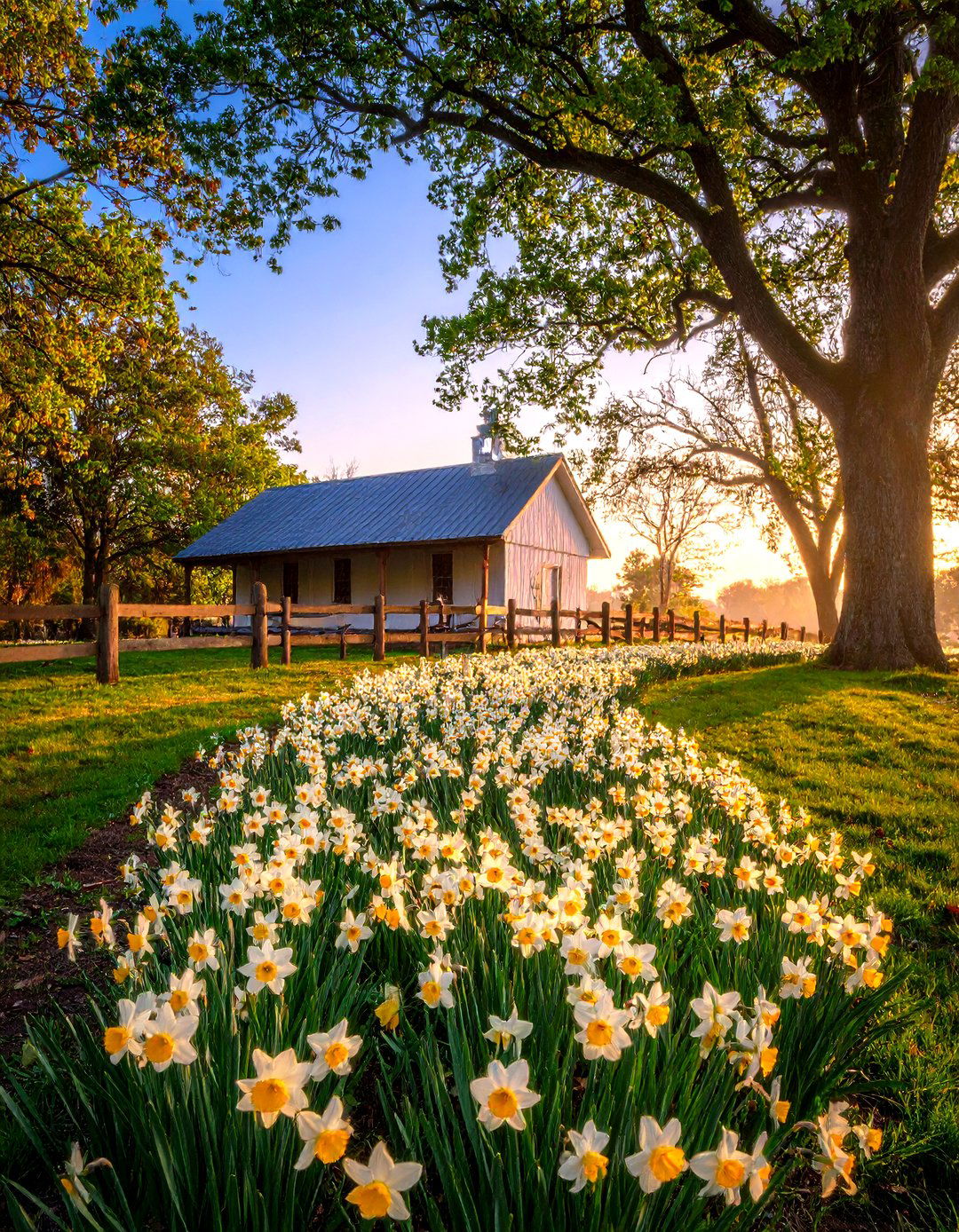
Filling a bed with nothing but daffodils of staggered bloom times keeps colour flowing for up to two months. Begin with February-Gold type miniatures, follow with classic mid-season trumpets, and finish with poeticus varieties that flower well into May. Arrange groups back to front in order of height so later varieties don’t hide earlier ones. Site the bed in full sun; daffodils need ample energy to sustain successive waves. Mark each group with discreet labels because foliage eventually overlaps, making division easier when clumps crowd. Feed with balanced bulb fertilizer every other spring—staggered blooming drains soil nutrients faster than single-flush plantings.
14. Daffodil Meadow Transition Strip
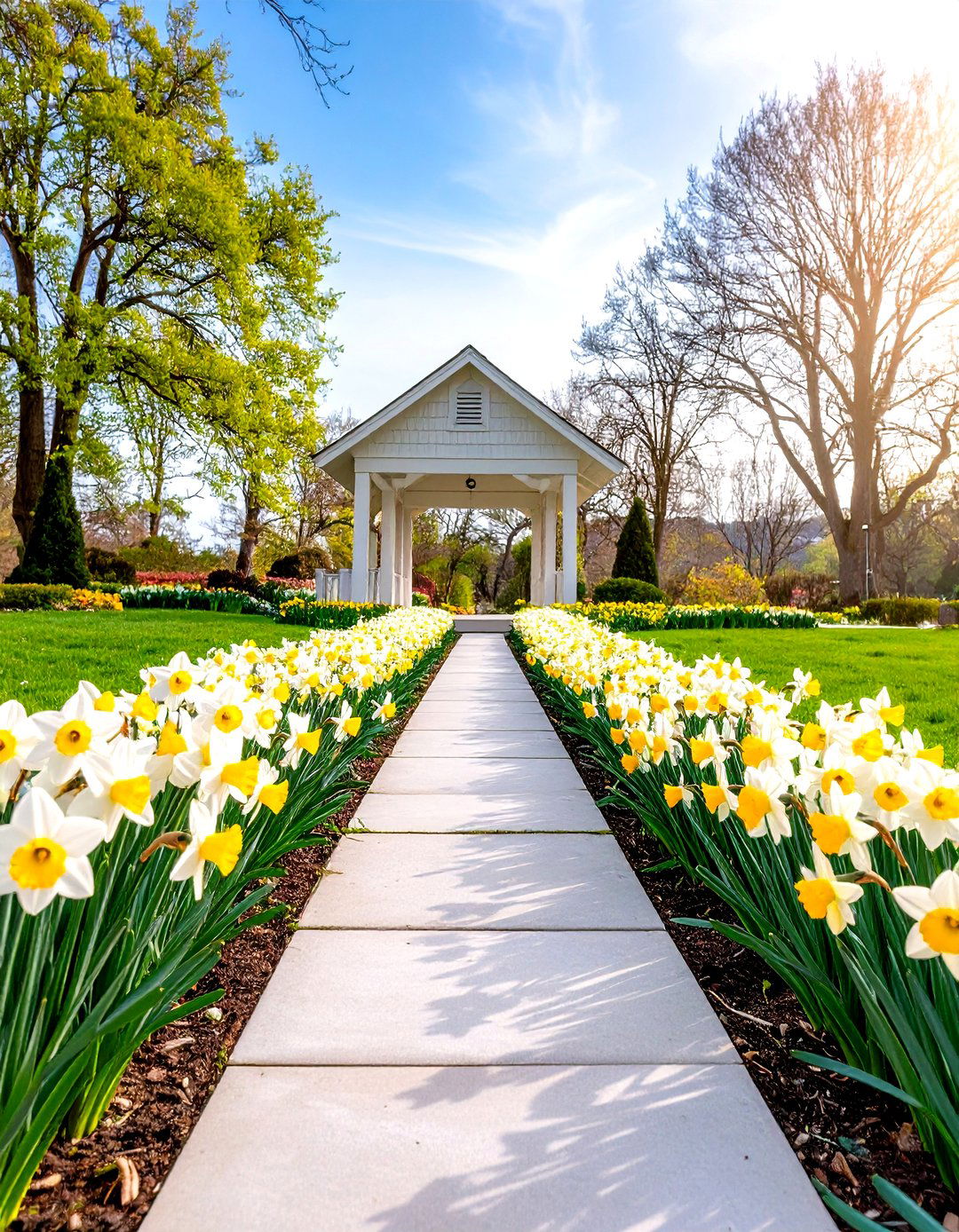
At the edge of a formal garden and an untended meadow, a flowing band of naturalized daffodils provides a graceful visual bridge. Choose an area that receives morning sun and stays unmowed until foliage yellows; early cultivars will finish before meadow grasses shoot skyward. Plant bulbs in irregular arcs rather than straight rows—scattering them from a basket and planting where they land keeps patterns organic. Maintain six-inch spacing so colonies can double without choking themselves. Because meadow soils are often lean, incorporate a handful of compost in each hole and water during prolonged spring dry spells to sustain bloom quality.
15. Hillside-Stabilizing Daffodil Slope
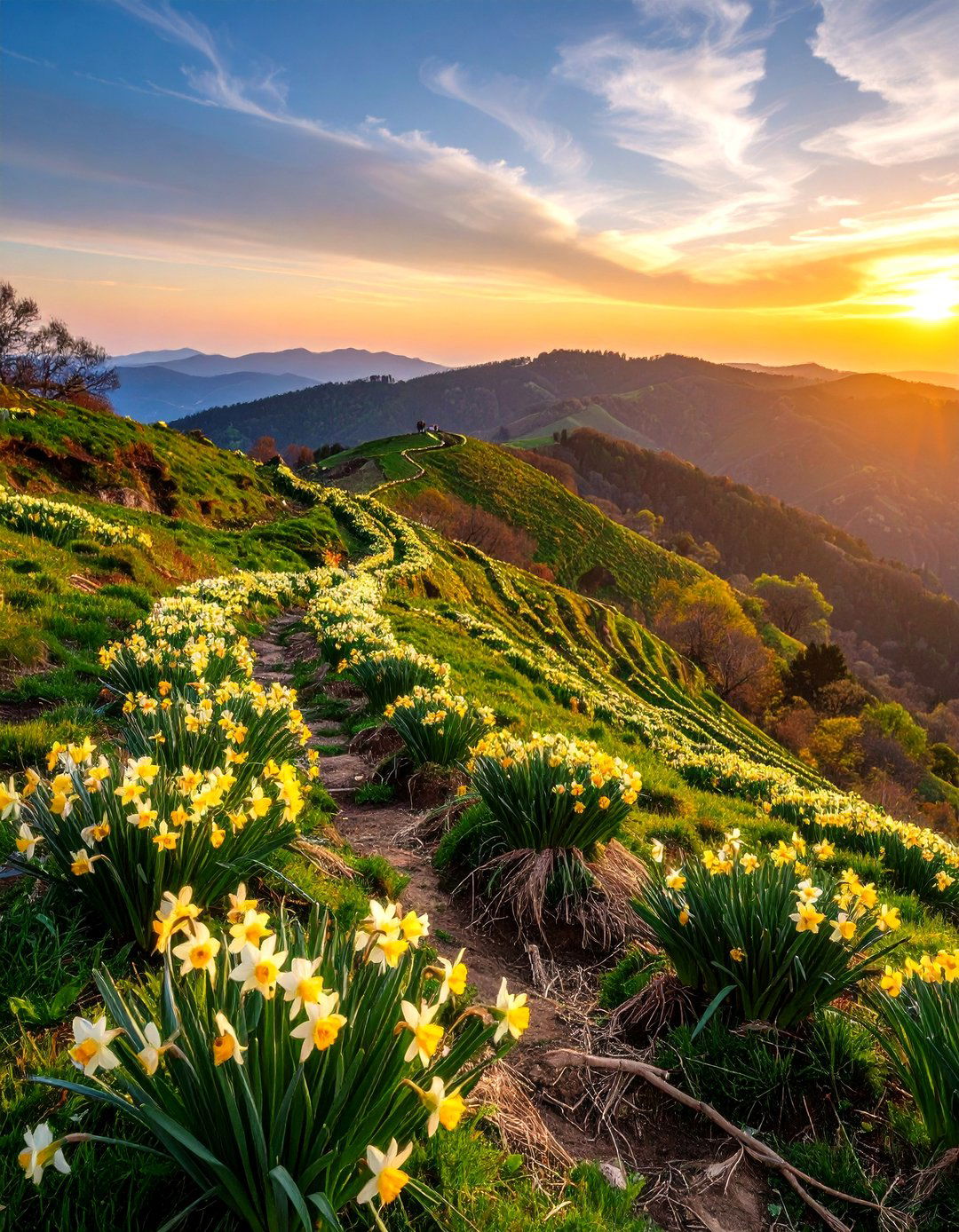
Loose, erosion-prone slopes gain both beauty and stability when planted with daffodils whose fibrous roots knit soil together. Specialists recommend sunny hillsides with free drainage, exactly the conditions bulbs relish. Dig terrace-like pockets across the face of the bank, inserting bulbs at twice their height and backfilling with compost for extra moisture retention. Space clumps closer—about four inches—so foliage quickly covers bare earth and slows runoff. Add low-growing thyme or creeping phlox between bulb groups to provide summer cover once daffodil leaves die back. You’ll reduce weeding, anchor soil, and enjoy a golden cascade each spring without watering once plants establish.
16. Water-Wise Daffodil Gravel Garden
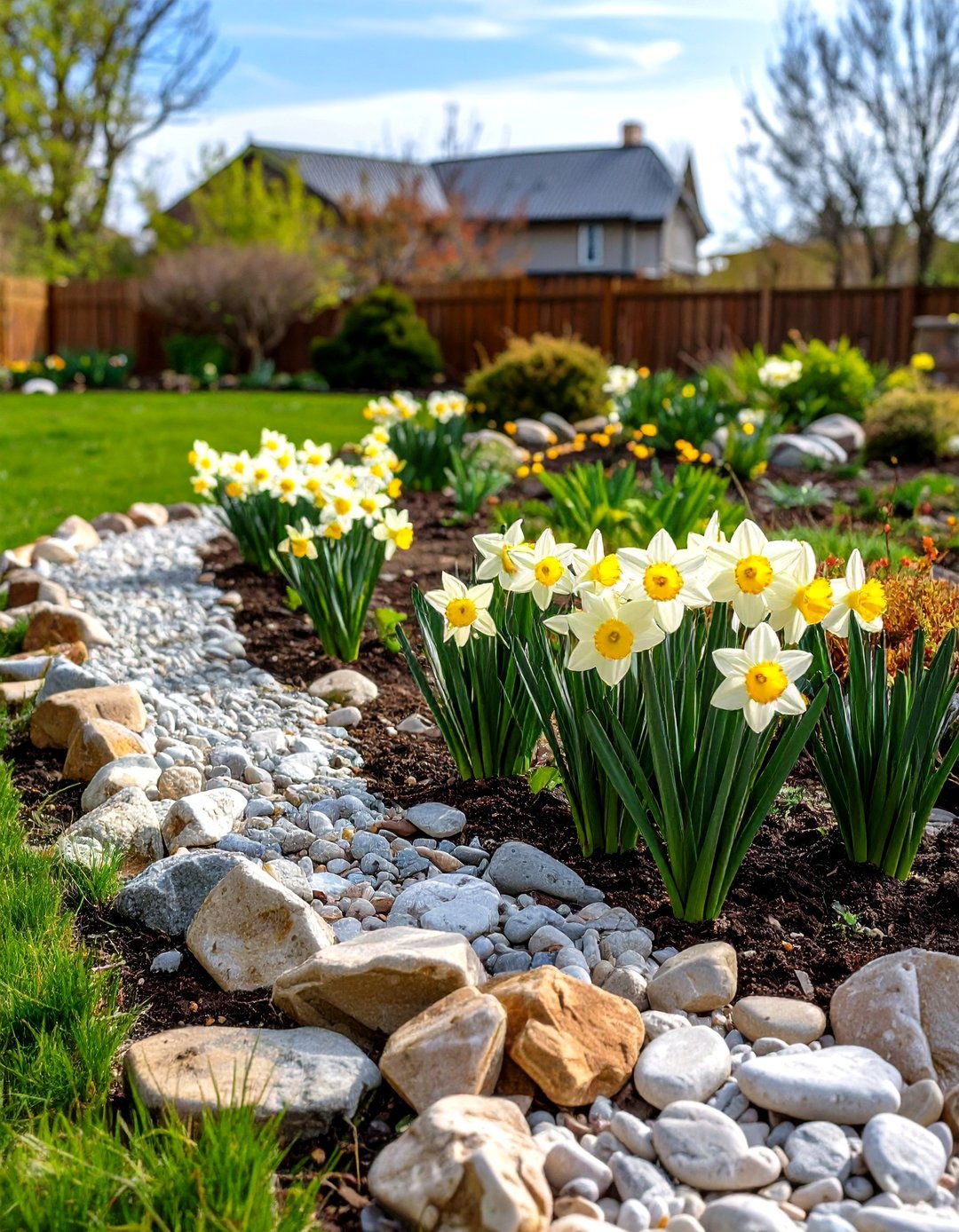
In climates where rainfall is scarce after spring, daffodils can still flourish in a xeric gravel garden. Plant bulbs into pockets of gritty mix sheltered by stones that capture daytime warmth and shed water quickly. Add a top layer of pea gravel to discourage weeds and reflect light onto emerging shoots, boosting photosynthesis. Choose drought-tolerant cultivars like ‘Barrett Browning’ and refrain from supplemental irrigation once foliage has died down; excess summer moisture is the common killer in dry regions. Every second autumn, fork in a light dose of low-nitrogen bulb fertilizer to replenish nutrients lost to leaching. The planting needs virtually no water but rewards you with vivid blooms each March.
17. Daffodil-Edged Garden Path

Framing a walkway with alternating clumps of daffodils draws visitors forward while keeping them off emerging beds. Plant bulbs six inches behind hard edging so spent foliage can flop safely away from feet yet still absorb sun. Use staggered groups of three to five bulbs every eighteen inches for rhythm, blending early yellows with late white poeticus for prolonged interest. Sprinkle fine gravel between clusters to highlight distinct mounds and aid drainage along paths that often stay compacted. Deadhead fading blooms but resist trimming leaves; shrubs or ornamental grasses planted farther back will conceal yellowing foliage later. The path remains inviting through all seasons without sacrificing bulb health.
18. Child-Friendly Daffodil Discovery Circle
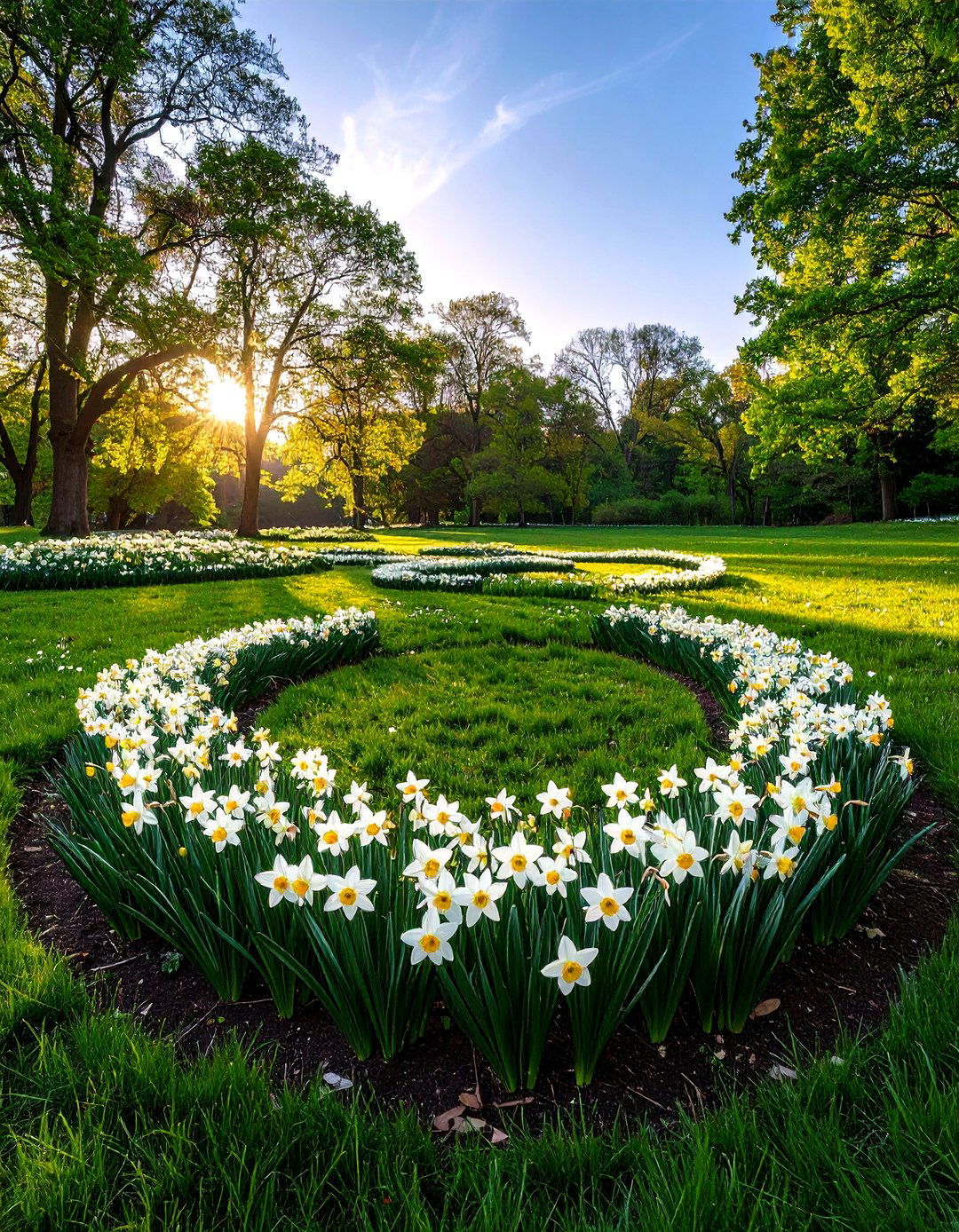
Create a knee-high ring of daffodils around a small patch of lawn so children can sit in the centre and feel hidden by bright petals. Choose early-blooming miniatures such as ‘Tête-à-Tête’ to keep flowers at eye level for youngsters. Space bulbs four inches apart to build a dense wall, but maintain a two-foot grass path for access and picnics. Explain to budding botanists that the sap can irritate skin, so picking is best done with gloves; learning safety becomes part of the game. After petals drop, the ring converts to a fairy meadow of uncut grass until leaves yellow, teaching patience and natural cycles in one playful spot.
19. Pollinator-Supporting Daffodil Mix
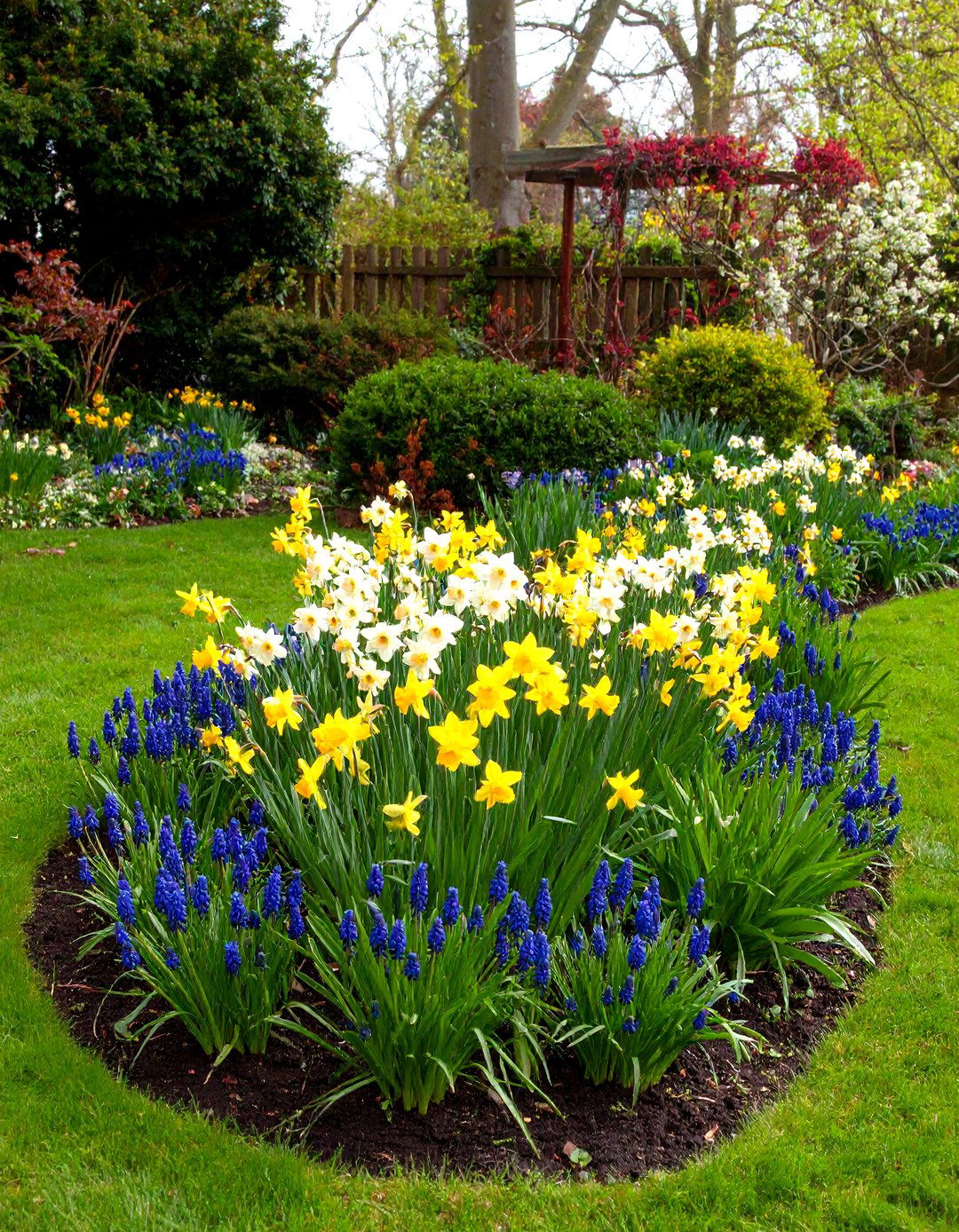
While daffodils themselves offer limited nectar, pairing them with early Crocus, Muscari, and Scilla in the same bed ensures bees have food during cool spring days. Layer the companion bulbs above daffodils in a two-tier lasagna so smaller blooms poke through first and are not shaded. Use untreated, pesticide-free bulbs to protect visiting insects and leave a shallow dish of water with pebbles nearby as an early drink station. Allow some spent daffodil flowers to set seed; the process provides naturalistic texture and minimal extra work while pollination continues elsewhere. As bees buzz, children learn the link between bulbs and biodiversity—an ecological lesson sown alongside every trumpet.
20. Moonlight White Daffodil Night Garden
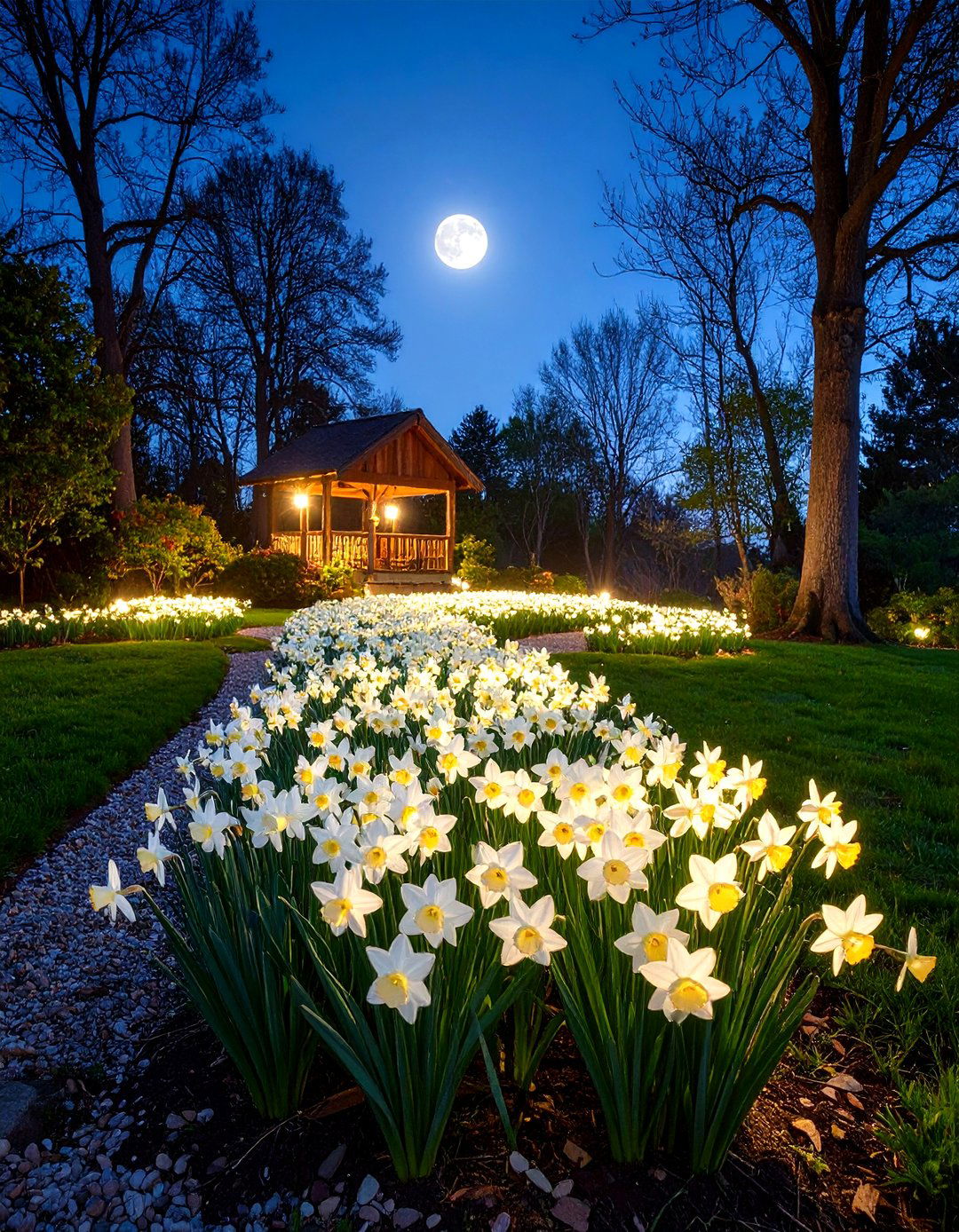
For evening appeal, design a small plot filled with pure-white daffodils that glow under moonlight. Select cultivars like ‘Thalia’ or ‘Stainless’ whose petals reflect ambient light, making paths visible after dusk. Outline beds with pale gravel to bounce extra lumens toward blooms and improve drainage. Interplant silver-leafed artemisia and white pansies to maintain the ghostly palette when daffodil season passes. Install low, warm-white solar stakes to highlight trumpets without attracting insects to doorways. Deadhead spent flowers promptly so yellowing doesn’t mar the nighttime aesthetic, but leave leaves until they wither naturally, as always. The result is a serene, glowing haven visible from kitchen windows long after sunset.
Conclusion:
Golden or white, miniature or trumpet-sized, every daffodil shares two gifts: the power to lift spirits and the reliability to return year after year with little fuss. By matching the right idea to your site—be that a shady woodland, a thirsty gravel bank, or a family patio—you transform a single spring bloom into a long-term landscape asset. Apply good drainage, proper depth, and post-bloom patience, and these twenty strategies will weave daffodil brightness through your garden for decades, paying cheerful dividends each March.


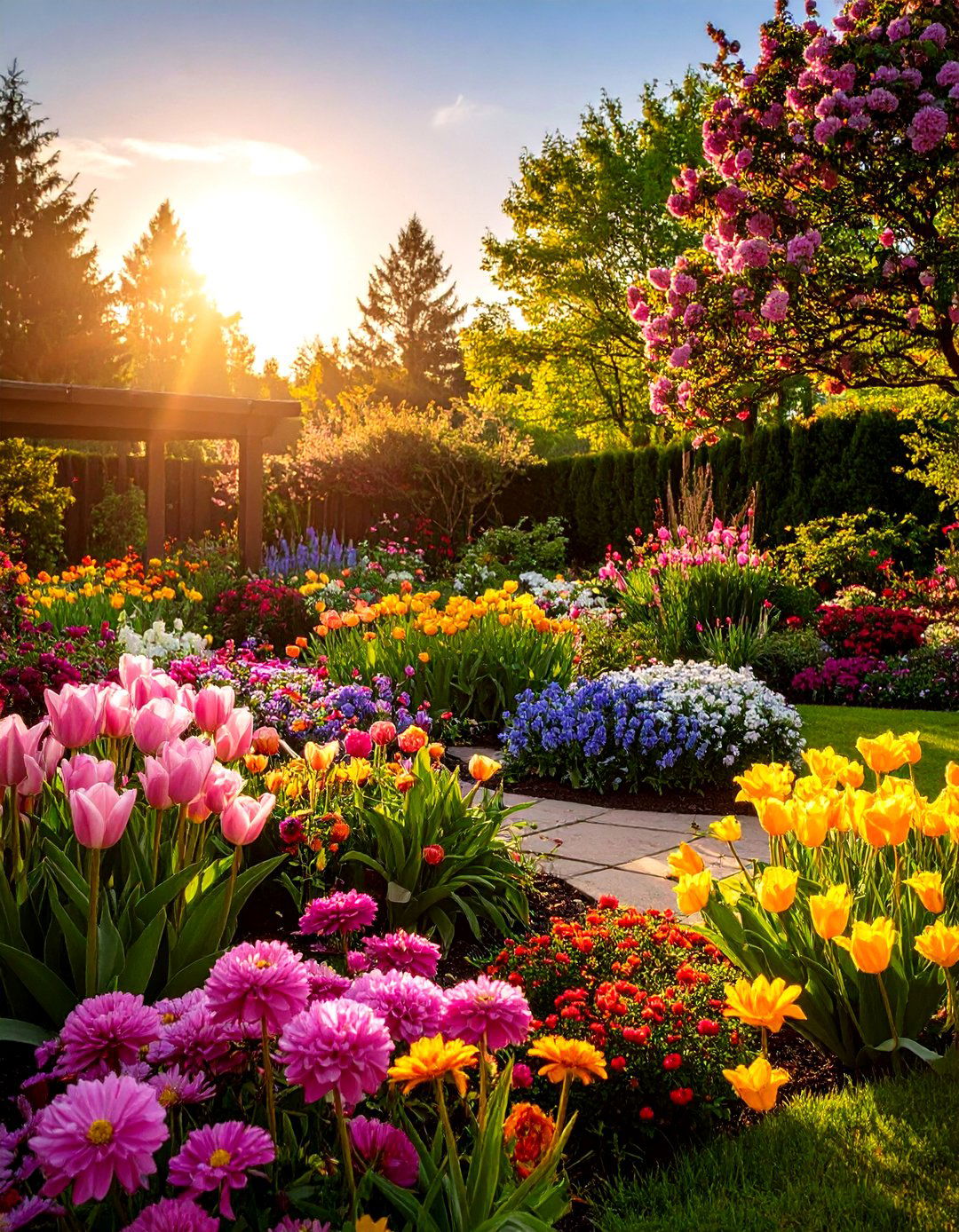
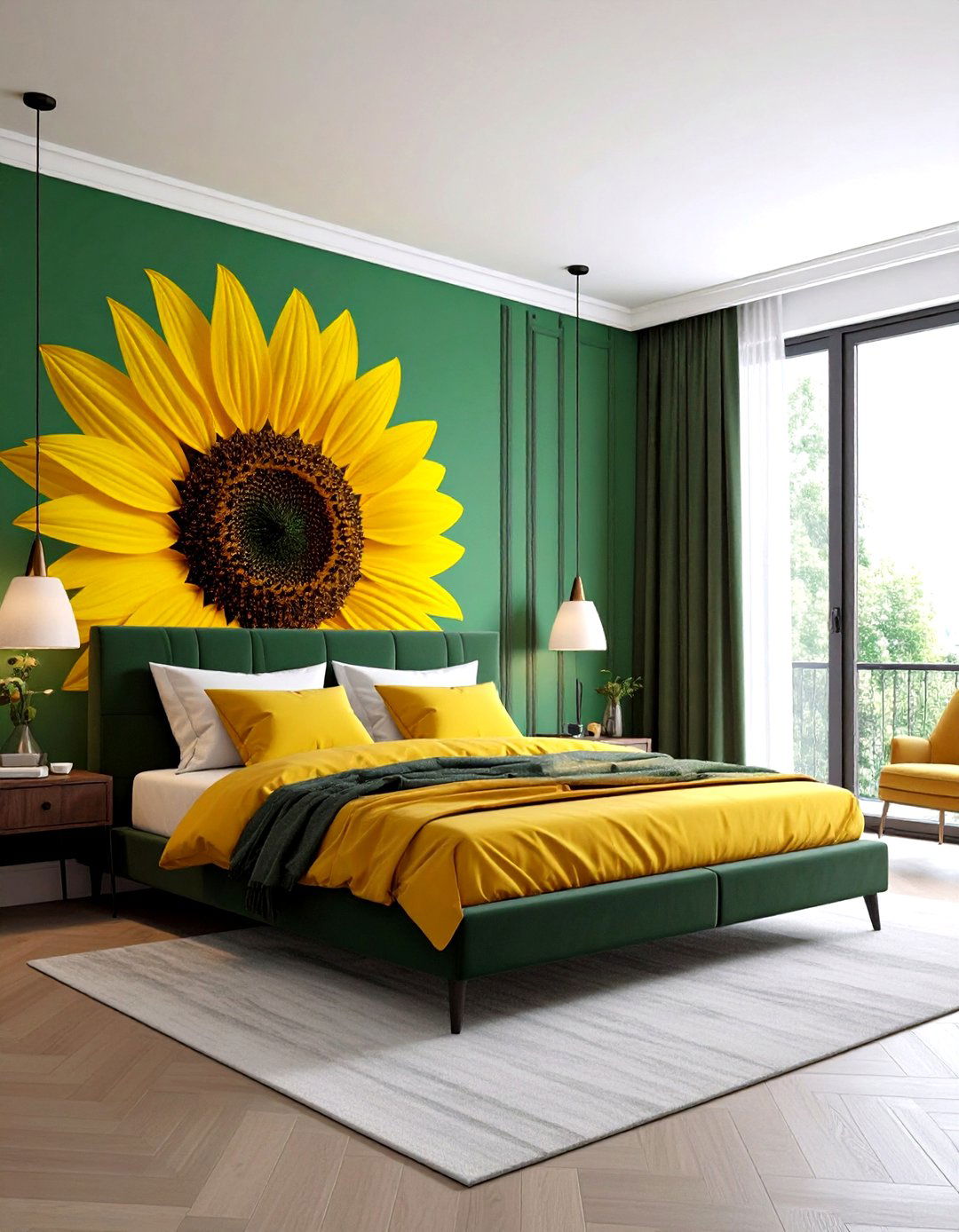

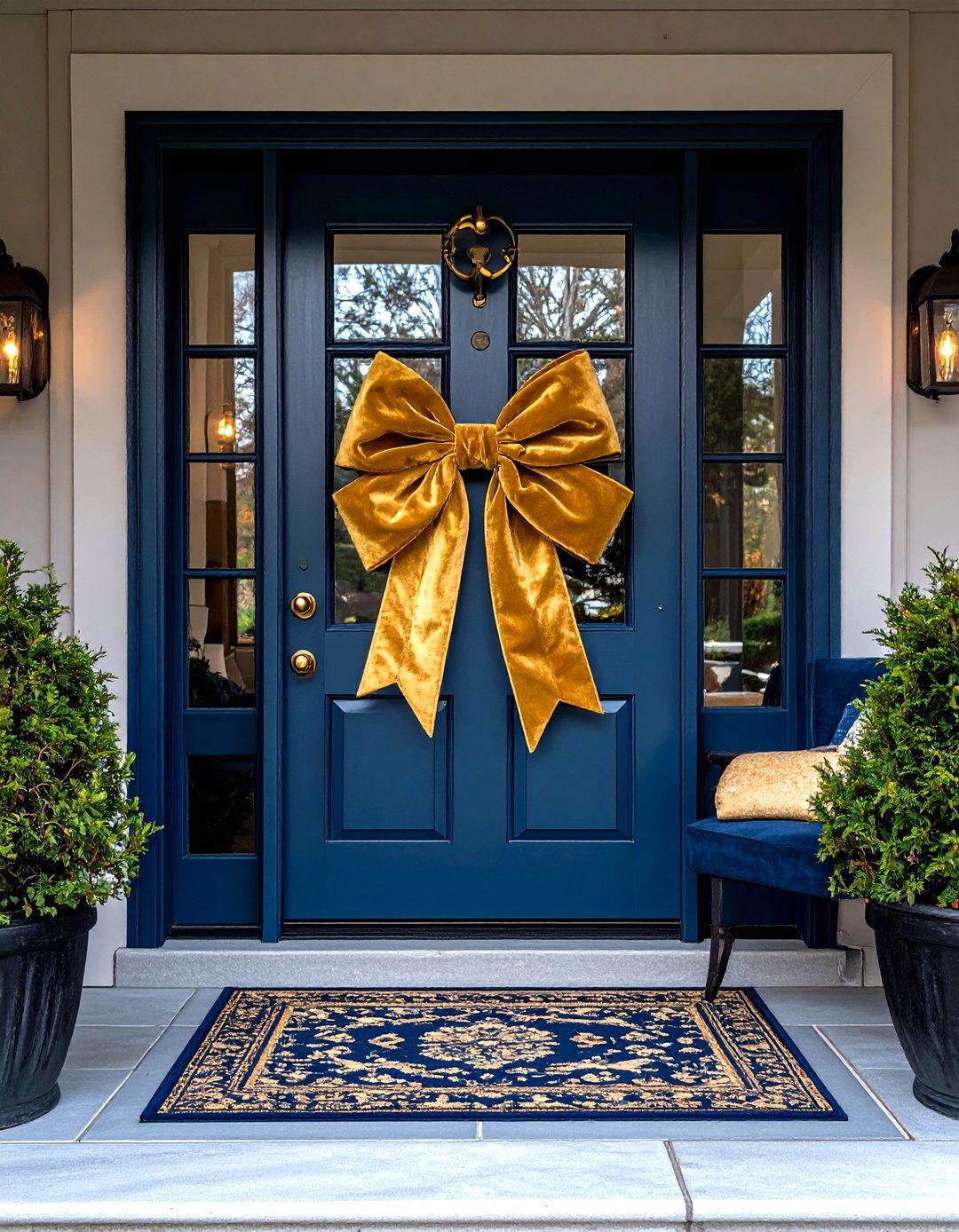
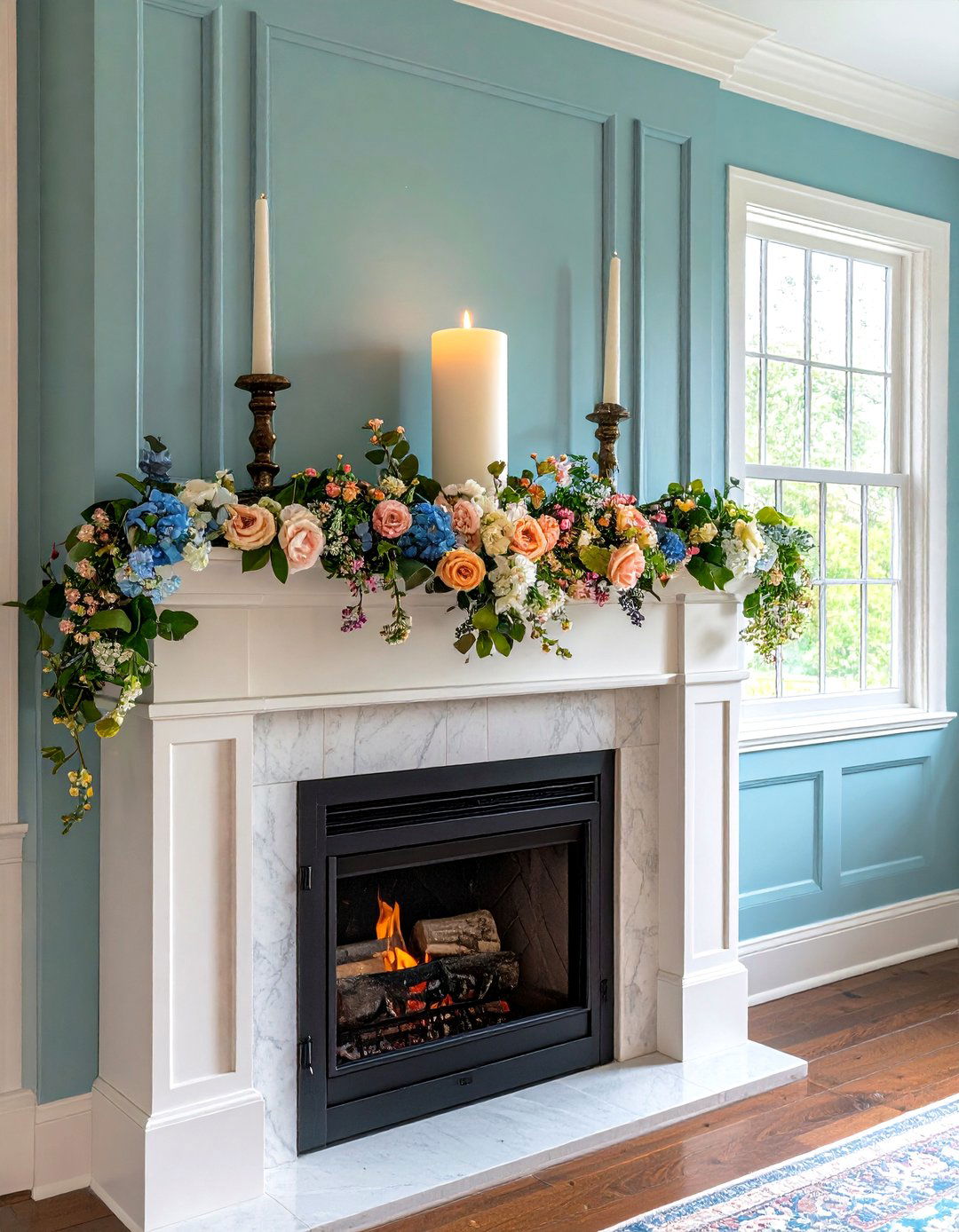
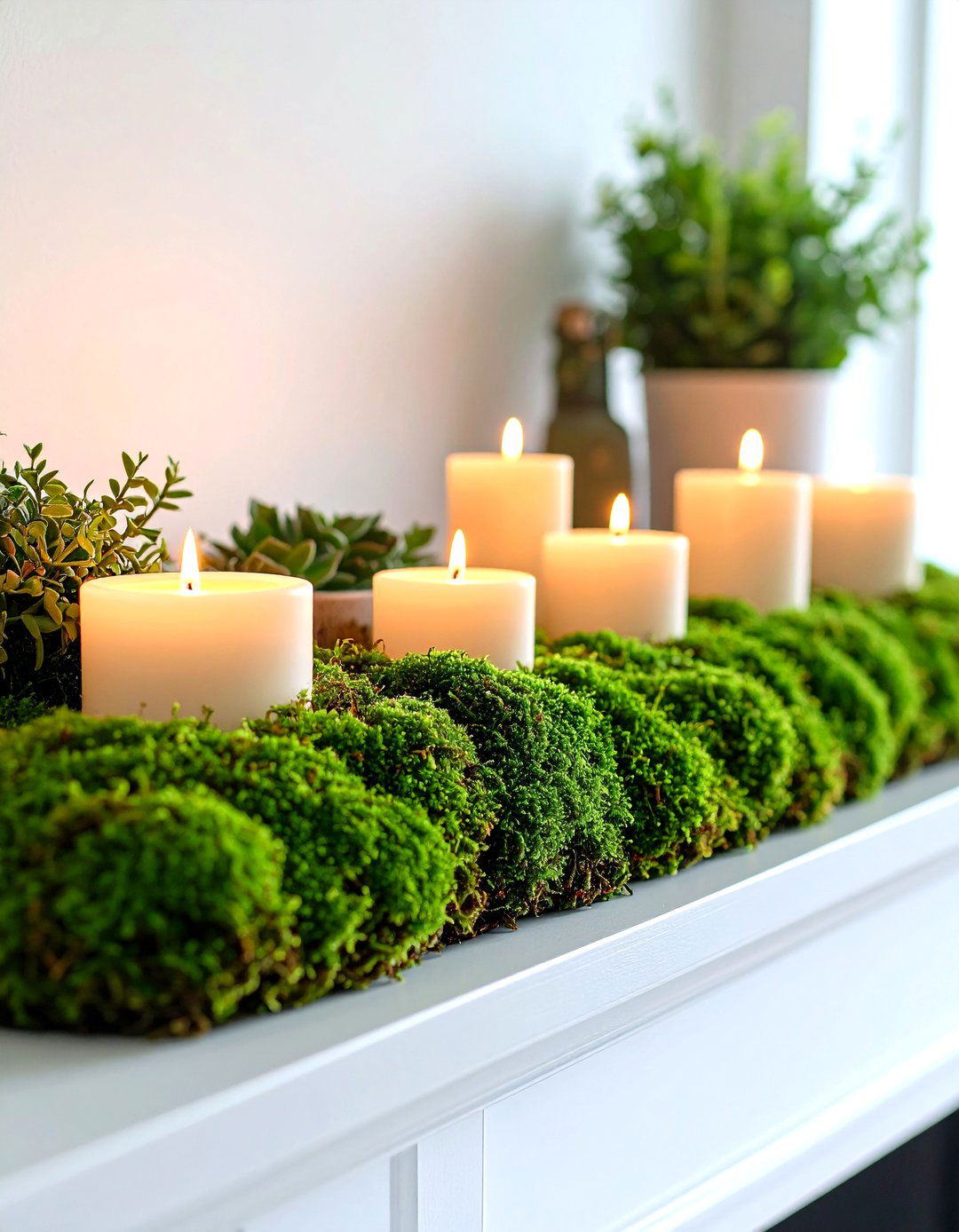
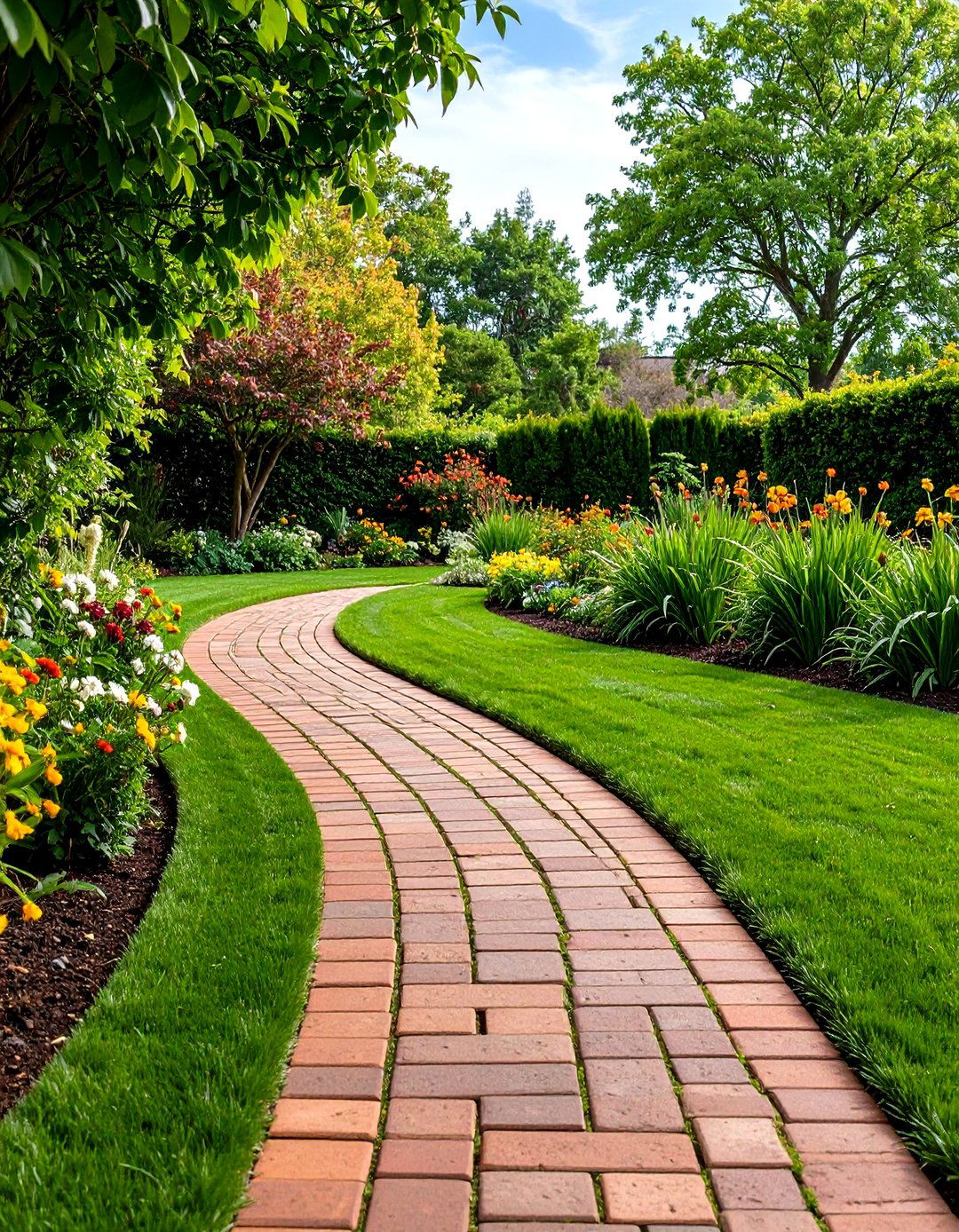
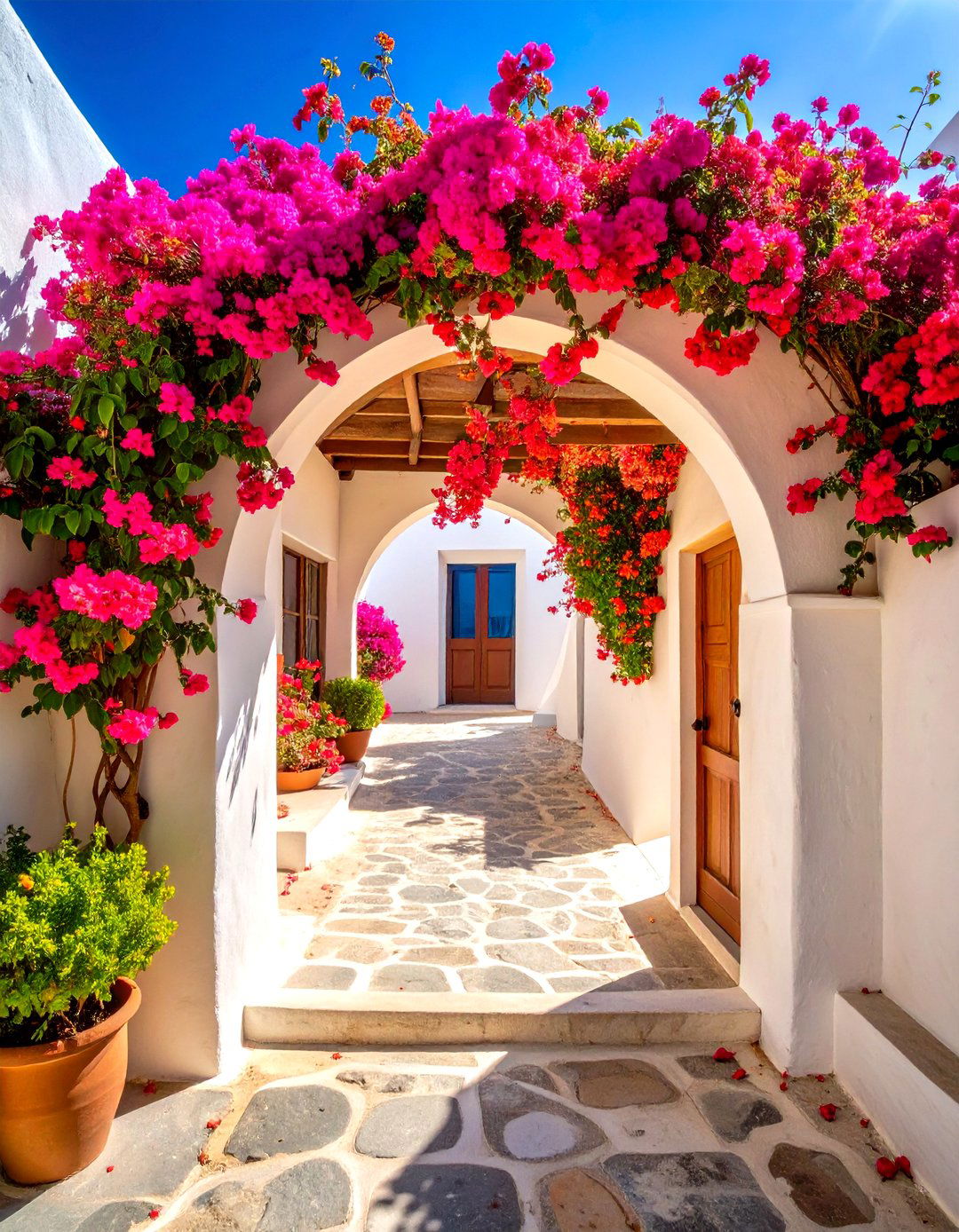
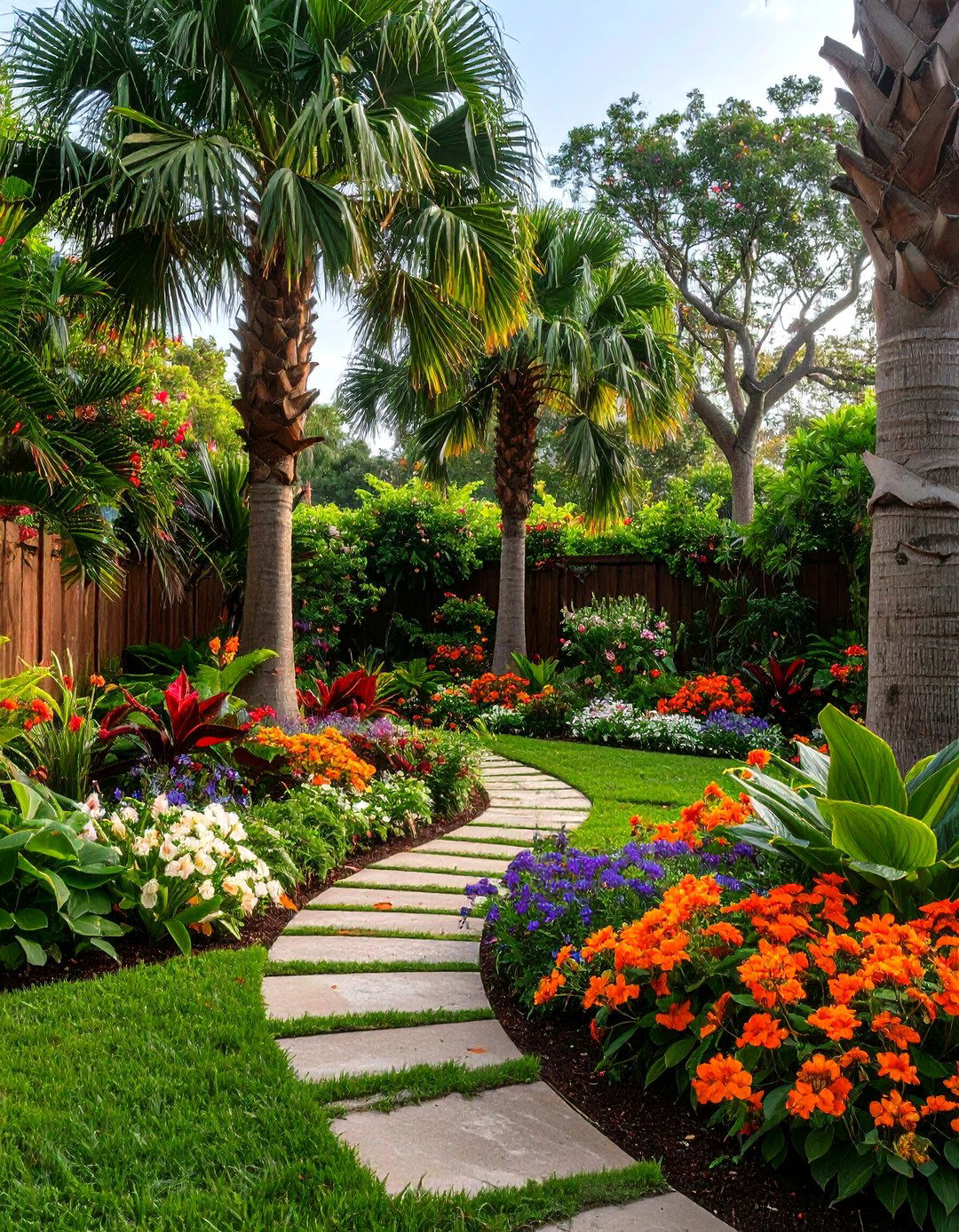


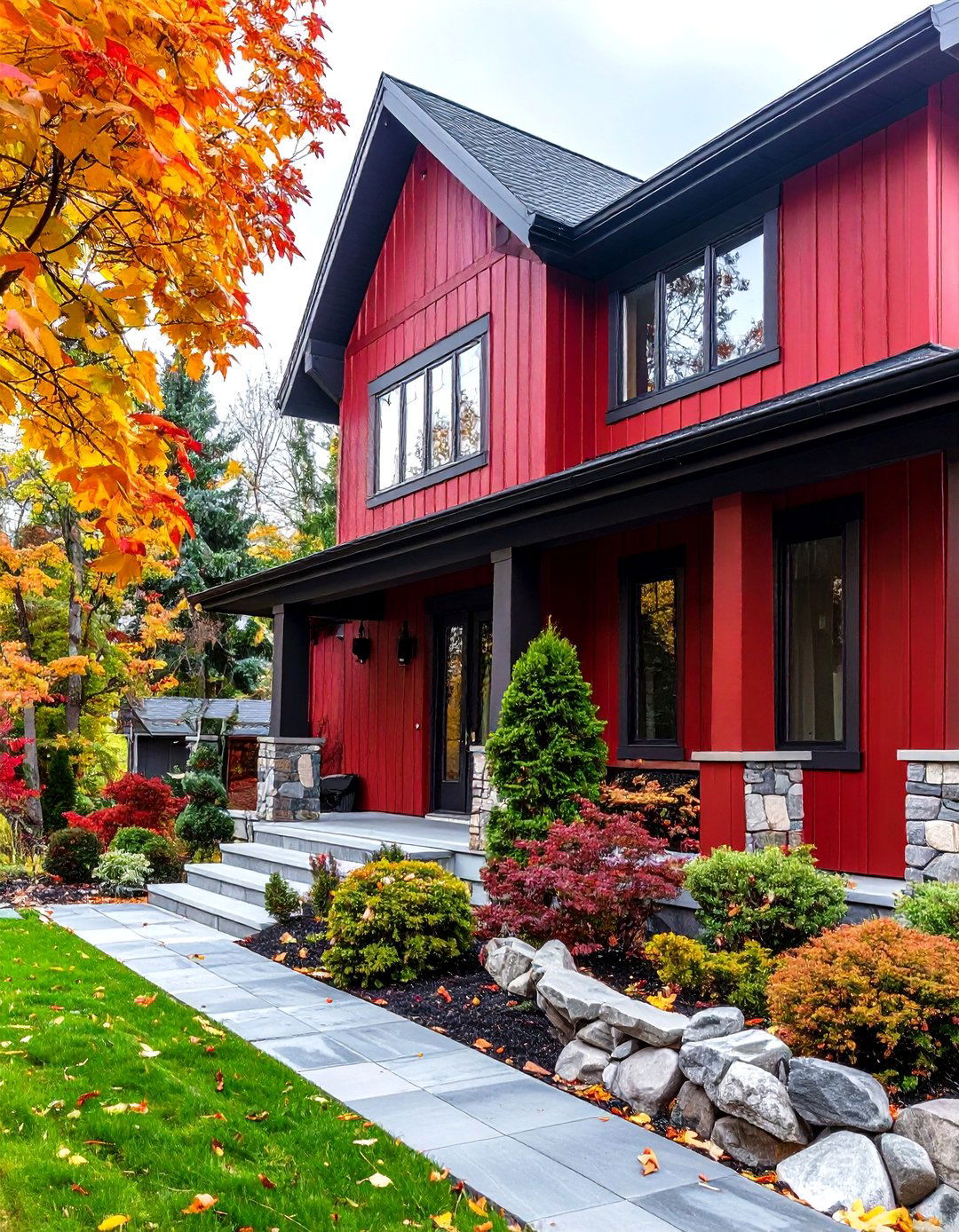

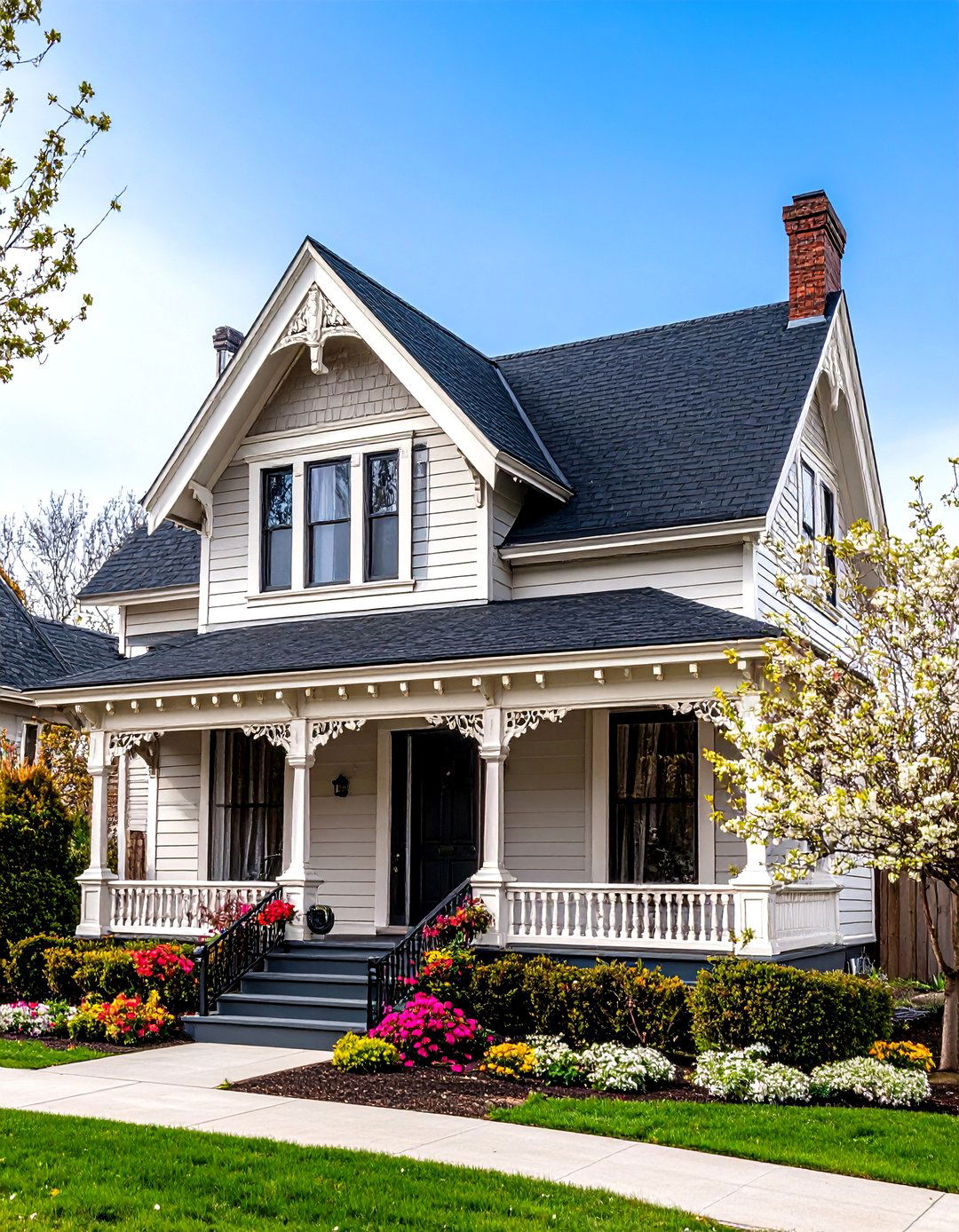
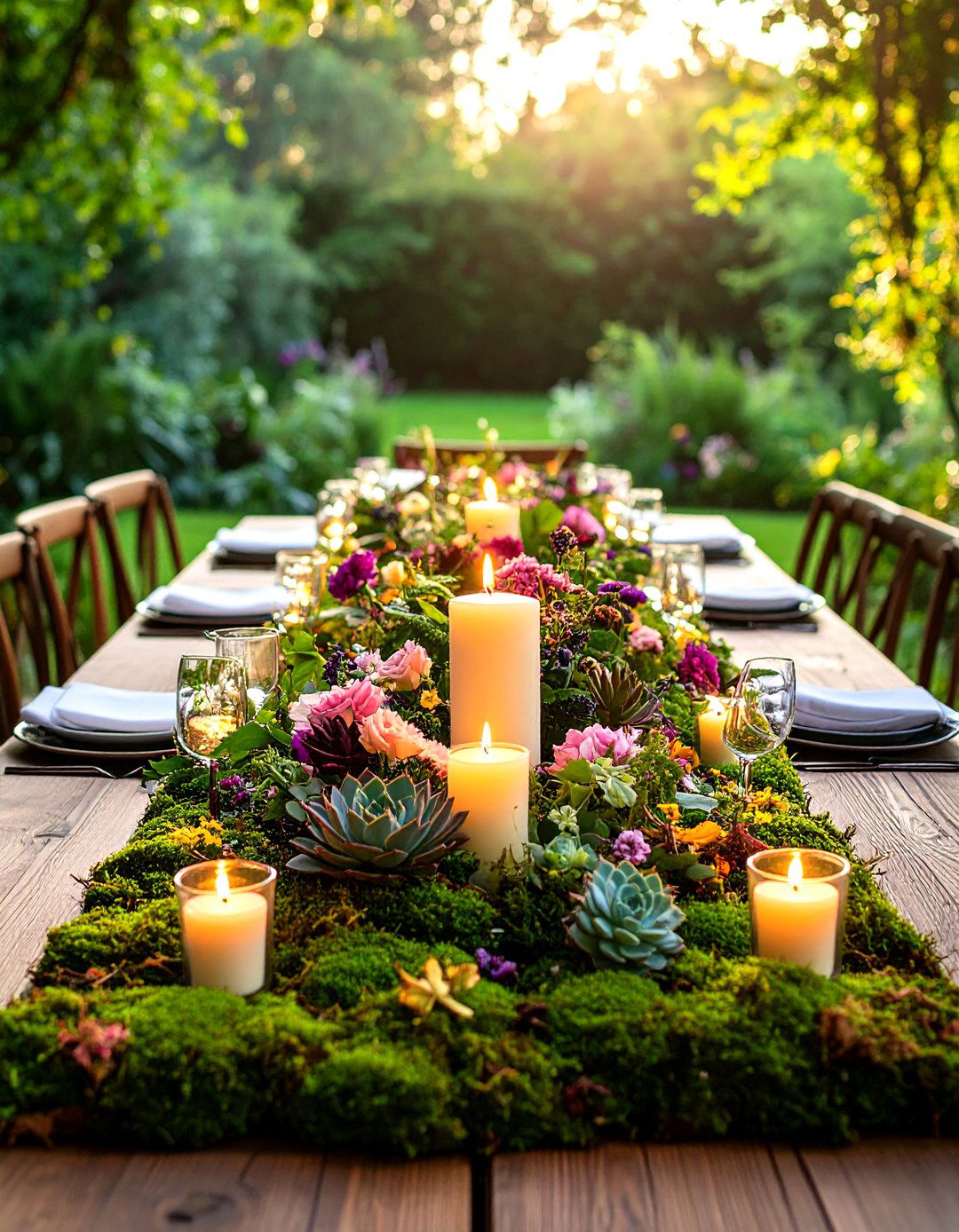
Leave a Reply